

How Much Does It Cost to Bottom Paint a Sailboat?
Do you often exit the waters after a fun day of sailing only to find that barnacles have attached themselves to the bottom of your sailboat? Scraping the barnacles away can take hours, not to mention you risk damaging the paint of your boat. A friend of yours recommended using bottom paint instead, but you’re not quite sure. How much does it cost to bottom paint a sailboat?
Here are the costs to get your sailboat bottom painted:
If this will be your first time getting your sailboat bottom painted, then you’re not going to want to miss this article. In it, we’ll explain bottom painting in more detail, discuss the benefits, and highlight more information about the above prices. Keep reading!
What Does It Mean to Bottom Paint a Sailboat?
Bottom paint is also referred to as antifouling paint. No matter what you want to call it, this paint goes on the underside of boats (hence the name bottom paint) and is intended to prevent aquatic organisms of all kinds from attaching to your boat. These organisms can include barnacles and even weeds.
Bottom paint is made with a biocide, or a type of microorganism or chemical that can stop harmful organisms dead in their tracks. Tin was the biocide of the day back when little was known about how it may affect our waters.
Once more information came out about how tin can leech into the sea when used as a bottom paint, a new biocide was added to commercial antifouling paint instead: copper. That’s not to say that copper is all that much better than tin in terms of environmental sustainability, as it too could pollute the waters.
That’s why you went from seeing most bottom paint with copper as a primary ingredient to today’s bottom paint, which has very little copper in it. Some bottom paints are even completely copper-free. This is to your advantage as well as the environment’s, as generally, the higher the quantity of copper, the more expensive the bottom paint.
Bottom paint comes in two types: hard-bottomed and ablative. Let’s discuss both types now.
Hard-Bottomed Paint
Hard-bottomed paint, also referred to as hard modified epoxy or non-sloughing paint, has more copper than other types of boat bottom paint. The copper biocide only lasts for so long, and as it wears away, water can get into the paint, diminishing it.
Long before that happens, hard-bottomed paint creates a hardened layer underneath that’s suitable for speedy boats interested in maintaining performance.
Ablative Paint
Self-polishing or ablative bottom paint disappears at a slower rate compared to hard-bottomed paint. As it lessens, the biocide within the paint is revealed, preventing the paint buildup you can sometimes get with hard-bottomed paint. That said, ablative paint becomes less efficient the longer it’s on your boat.
How Much Will You Pay to Get a Sailboat Bottom Painted?
If you’re considering whether getting your sailboat bottomed painted is what you want, one factor that will definitely weigh heavily on your mind is the price. What will you pay for this service?
After researching a variety of bottom painting pros, here is a table of the costs you might expect to shell out for antifouling paint on your sailboat. Keep in mind that prices can vary, so we highly recommend calling or emailing the bottom painting servicer you found and asking about their prices directly.
That said, here’s a chart to give you an idea of what you’ll pay per foot depending on the size of your sailboat.
What Are the Advantages of a Bottom-Painted Sailboat?
As the prices above show, per square foot, most bottom painting jobs aren’t tremendously expensive. Surely if this is a service you’re interested in for your sailboat, you can save some room in your budget for antifouling paint.
When you do so, you’re benefitting your boat in the following ways.
Great Durability
You wouldn’t want to get most paint wet, right? Especially the wall paint in your house or even the paint on your car for long periods. Yet with bottom paint, it’s not only designed to be submerged, but it works better when it’s underwater. The biocides won’t get released outside of the water, so bottom paint needs H2O to really activate.
As it works, the bottom paint will form an even harder shell over time, protecting your sailboat from creatures and weeds more impressively.
Less Sailboat Damage
The creatures beneath the sea can be damaging to your sailboat in a myriad of ways. If your boat’s underside is wood, some creatures can eat the wood, beginning to destroy your boat from the outside in. Barnacles, mussels, and other shellfish with hard exteriors will stick to your boat. As we mentioned in the intro, peeling these organisms off the boat is not exactly easy, and sometimes the removal leaves dings, scratches, dents, and other visible damage on your boat.
Even if the barnacles and mussels don’t stick, as they float on by, their shells can slit most boat paint to reach the fiberglass or whatever your boat is made of. If your sailboat accrues enough damage of this nature, it could fissure or develop every deep cracks that make using it a risk.
All this is preventable with bottom paint. Think of how much money you’ll save not having to make such astronomical repairs!
Reduced Drag
Sailboats aren’t the quickest vessels on the water, and if you don’t check what’s going on with your boat’s underside too often, your performance will suffer even further. Depending on the scope of accumulation, barnacles and other sea creatures sticking beneath your boat can reduce your efficiency and performance by as much as 50 percent.
Now, you might think, hey, a few barnacles aren’t so bad. Well, maybe not at first, but once barnacles begin reproducing–which they do, frequently–then you have a very bad problem under your boat. Even having one barnacle on your boat is no good then, as with one will quickly come 40 or 50 more.
Do You Need to Get Your Sailboat Bottom Painted?
Getting your boat bottom painted is a commitment. As durable as this paint is, it only lasts for about two years. At that point, you’ll either have to pay to get more bottom paint applied by a pro or do this job yourself.
Here are the facets of caring for your sailboat’s underside that you must add to your regular maintenance routine.
Clean Often, But Not Too Often
Since slimy surfaces in the water that settle on the bottom paint can degrade its quality and shorten its lifespan, you definitely want to keep beneath your sailboat clean. However, scrubbing way too hard or blasting the underside with a high-pressure power washer is not recommended.
You want to skip any abrasive cleaning measures, so that means reducing your power washer pressure and only using gentle cloths instead of hard sponges for cleaning the bottom paint. This goes double for ablative paint.
Protect Against Damage
One element of maintaining your boat’s bottom paint is to be a careful and conscientious sailor. Know what kind of waters you’re heading into before you set sail. Hitting a pier, rocks, or hard bottoms can crack away at the antifouling paint, making it work less well.
Check Your Electrical System
If your sailboat’s electric system isn’t grounded, then you could be releasing electricity into the sea around you each time you sail. This has a neutralizing effect on your bottom paint, and it could accelerate the degradation of the paint quality. Get your electrical system grounded and then hit the open seas!
Bottom paint or antifouling paint can rid your sailboat’s underside of barnacles, weeds, and other organisms and detritus. This paintjob isn’t overly expensive, but you will have to follow a bottom painting maintenance routine from here on out.
Now that you understand what bottom painting a sailboat is, you can decide whether this is the best course of action for your boat.
I am the owner of sailoradvice. I live in Birmingham, UK and love to sail with my wife and three boys throughout the year.
Recent Posts
How To Sail From The Great Lakes To The Ocean
It’s a feat in and of itself to sail to the Great Lakes. Now you want to take it one step further and reach the ocean, notably, the Atlantic Ocean. How do you chart a sailing course to get to the...
Can You Sail from the Great Lakes to the Gulf of Mexico by Boat? 
You have years of boating experience and consider yourself quite an accomplished sailor. Lately, you’ve been interested in challenging yourself and traveling greater distances than ever before. If...

How Much Does It Cost to Bottom Paint a Boat? (Price Estimates)
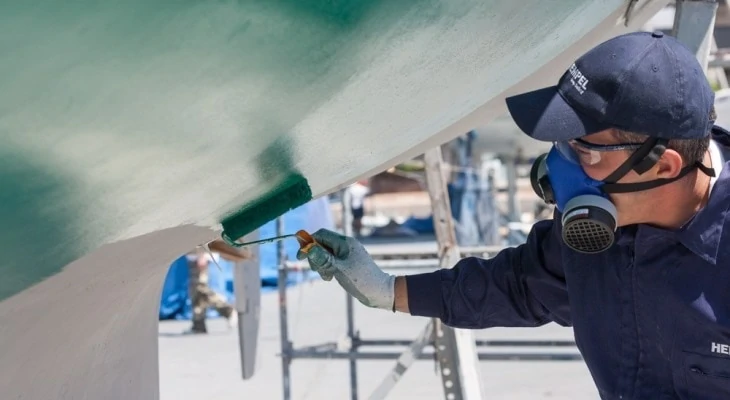
A boat is an investment but for water lovers, the payoff is well worth it! Bottom painting your boat is part of the investment to maintain your boat. What does bottom painting involve? And, exactly how much is it going to cost, anyway?
Fortunately, there are a lot of options! Whether you are on a budget or you want the project completed quickly, there is a solution for you and your boat. Let’s find out more about bottom painting a boat, and the costs involved.
Table of Contents
What is Bottom Paint?
Why bottom paint a boat, primer/barrier coat, estimated cost, cost for labor, hauling and storage fees, cost per square foot, materials needed, time needed, when is it unnecessary to bottom paint a boat.
Bottom paint is also often called antifouling marine paint. It is a specially formulated paint or paints that coat the bottom of a boat. This multi-layer coating helps discourage the growth of aquatic organisms on the boat.
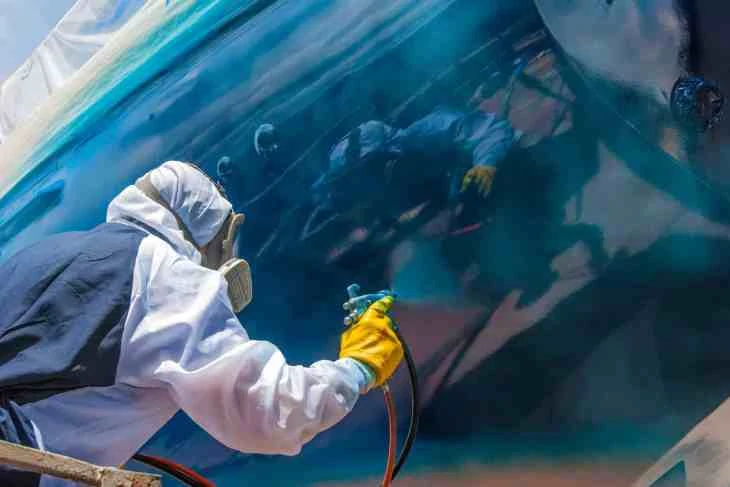
Bottom paint coats the bottom of the boat in order to discourage the growth of fouling aquatic organisms. These organisms, such as barnacles and algae, adhere to solid surfaces in the water, such as the bottom of your boat.
These aquatic organisms grow fast. You may try to keep up with scraping down the bottom of the boat, but it will be difficult to keep up with the growth on the underside.
All those barnacles and algae will slow down your boat, as well. The increased water resistance may cause as much as a 50% loss in hull through water efficiency. Not only will that cost you time, but you’ll spend more on diesel to get you to your destination. If your prop has aquatic organisms, your engine will suffer , as well.
What Paint is Needed for Bottom Painting a Boat?
Bottom painting a boat usually involves three layers of paint applied to the bottom of the boat. Typically, you will need two coats of each kind of paint.
The first coat of paint will be either an epoxy primer or a barrier coat . The two-part epoxy primer is perfect for repairs to the bottom of the boat. It will dry rock hard for a durable base coat.
A barrier coat is a similar, hard paint that will adhere to fiberglass, repair damage, and dry hard. Barrier coats are typically only used on fiberglass boats. Based on the condition of your boat, you would choose either a primer or a barrier coat.
The base coat of paint will be an antifouling paint or an ablative paint . This softer layer of paint will provide a layer to repel the build-up of marine growth.
Antifouling paint is quick-drying. It will slowly self-polish or wear down over time. This helps reduce the build-up of paint.
Ablative paint is very similar to antifouling paint. Often, the two terms are used interchangeably. Ablative paint is self-polishing as well. As the boat is in use, the paint will wear away gradually. It also repels aquatic organisms.
If you have an aluminum boat, avoid antifouling paint that includes copper. Copper may cause corrosion on the aluminum unless you have a protective primer in place between the boat and the antifouling paint.
The top coat is a gel coat that gives the boat a glossy, protective finish. This step may be skipped, depending on the antifouling paint, and your desired finish on the boat.
How Much Does It Cost to Hire Someone to Bottom Paint a Boat?
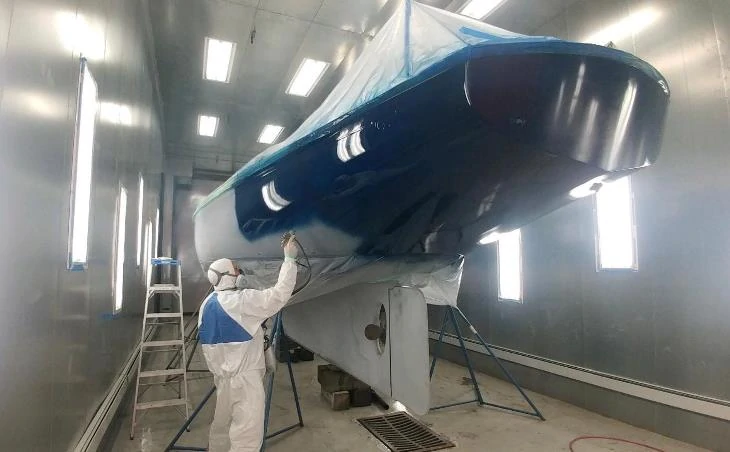
Most boat painters charge by the foot. For a 17-18 foot boat, expect to pay a total of between $1,200 to $3,000 or more to bottom paint a boat. As with any important job, it may be best to drop the lowest estimate and go with a reputable business that will treat you and your boat well.
Your dollars pay for materials, labor, and hauling, and storage fees.
Depending on the size of the boat, and the amount of work involved, a professional will probably spend between 10-20 hours painting the bottom of your boat. Most painters will charge $50-$100 per hour for labor. As you can see, labor makes up a good portion of your bill!
Often, your boat will need to be hauled to a painter, and stored during the painting process. Of course, there is a fee for this, as well. Most boat yards will charge by the linear foot to haul, wash, and block the boat. This fee is typically between $6-$10 per foot.
Yard storage fees are typically by the month. Often, boat owners will have their boat bottom painted during the off-season and will pay for several months of storage. Depending on the location, and the boat, be prepared to spend $100-$300 per month for storage fees.
In addition to paint, you are paying for the use of the painter’s brushes, tools, and equipment. The cost for paint for a 17-18 foot boat depends on the variety of paint used. Antifouling paint is fairly expensive. The cost for materials will be around $400-$700.
If you have about 200 square feet of paintable area on the bottom of your boat, your cost per square foot to bottom paint a boat will be $6-$15 or more.
How Much Does it Cost to DIY Bottom Paint a Boat?
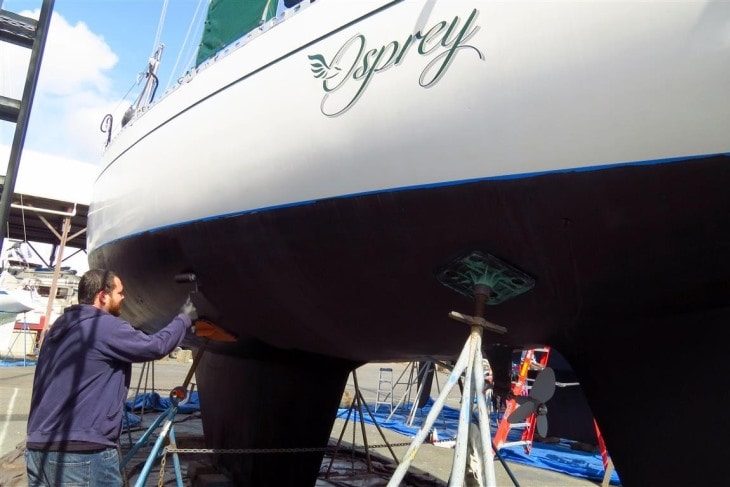
If you are painting your boat yourself, your only costs are materials. For a 17-18 foot boat, the cost for materials will be $500-$800. This depends on the condition of your boat, as well.
Boat Primer is the first step. This primer covers 200 square feet at under hundred bucks. Next, this antifouling paint costs slightly more. One gallon covers 500 square feet, so that will be enough for two coats.
The final layer of paint is a gel coat . If you want to build up several layers of gel coat, you will need 3-8 gallons of gel coat at around $35 per gallon. For 5 gallons, that would be $175.
You will also need brushes, paint suits, rollers, and other painting supplies. Plan to spend $30-$50 on these supplies. The fees to haul, block, and launch will be around $300.
The total amount for materials will be about $750.
If you have never bottom painted a boat or have extensive scraping and cleaning, be prepared to spend a little extra time. Otherwise, to bottom paint around 200 square feet of the boat, it will probably take 15-25 hours.
For 200 square feet of paintable space, the cost per square foot to bottom paint your boat yourself will be around $3.75.
If your boat is not stored in the water, it may not be necessary to use bottom paint. If you typically have your boat in a trailer or dry storage when it is not in use, it will be easy to perform regular maintenance. You should be able to remove all aquatic growth in between uses.
Final Thoughts
Bottom painting is a good investment for boats that spend a lot of time in the water! Evaluate your priorities. If you have the time, you can save a lot of money by bottom painting your boat yourself.

About Elissa Huebert
Elissa has been a homeowner for 18 years. During that time, she has painted every surface of her home at least twice (and some of her friends' homes, too!). She enjoys writing, learning, traveling, and trying new things.
1 thought on “How Much Does It Cost to Bottom Paint a Boat? (Price Estimates)”
Hi Elissa, I’ve recently bought a Hunter 18.5 that’s in dry storage at clinton lake Kansas, near Lawrence. There’s little time for me to do the painting myself and I’m looking for someone who would do that for me so I am looking for estimates. Thank you very much, Hal Crites
Leave a Comment Cancel reply
How Much Does It Cost to Bottom Paint a Boat (Price Estimates)
Caring for your boat’s hull is paramount to ensure its longevity. And paint is one way to help protect the hull from damage caused by the elements. But how much does it cost to bottom paint a boat?
Generally, the cost of painting the bottom of a boat can range anywhere from $500 to over $1,000. The cost of materials alone can be anywhere from $100 to $500, depending on the size of the boat and the type of paint being used. Labor costs will also factor into the total cost, ranging from $100 to $500.
I know the price sounds like, “Why are painting cans selling for the price of gold these days?” but there is more to the story. Keep reading to discover the factors that will affect the cost and how to minimize the cost.
Estimating the Price of Bottom Painting a Boat
The cost of bottom painting a boat per square foot can vary widely depending on several factors, such as the type of paint and primer used, the condition of the boat’s hull, the location, and additional services required. However, it is possible to provide some general estimates.
- The cost of bottom painting a boat using standard anti-fouling paint can range from $5 to $15 per square foot.
- The cost of bottom painting a boat using more expensive, high-performance paint can range from $10 to $20 per square foot.
- Additional services such as sandblasting or hull repair can add to the cost of bottom painting per square foot.
Remember that these estimates are just that – estimates. The actual cost of bottom painting your boat per square foot will depend on the specific factors that apply to your situation.
It’s always best to get a detailed quote from a professional boat painter, considering the condition of the boat’s hull, the type of paint and primer you want to use, and the location.
Average Cost of Bottom Painting a Boat
The cost of bottom painting a boat can vary, like the weather, depending on various factors discussed earlier. However, it’s possible to give some rough estimates for the cost of bottom painting different types of boats.
Small sailboat (20 feet or less)
Bottom painting a small sailboat (20 feet or fewer) can cost anywhere from $500 to $1,500, depending on the state of the hull, the type of paint and primer used, and the location. It is important to note that a sailboat of this size is easy to handle, and the paint job can be done quickly.
Medium sailboat (30-40 feet)
For a medium-sized sailboat, the cost of bottom painting can range from $1,500 to $3,000, depending on the same factors. This size of sailboat requires more attention and care, and the paint job will take longer to complete.
Large sailboat (40 feet or more)
Regarding large sailboats, bottom painting can set you back anywhere from $3,000 to $6,000, depending on the same factors. These boats are more challenging to handle and require more skill and experience to paint.
Small motor yacht (20-30 feet)
Bottom painting a small motor yacht can cost between $1,000 to $2,500, depending on the same factors. These boats are relatively easy to handle and can be painted quickly.
Medium motor yacht (30-40 feet)
The cost of bottom painting for a medium-sized motor yacht can be anywhere from $2,500 to $5,000, depending on the same factors. These boats require more attention and care, and the paint job will take longer.
Large motor yacht (40 feet or more)
Large motor yachts can be quite the investment, and bottom painting one can cost anywhere from $5,000 to $10,000, depending on the same factors. These boats are large and complex, and the paint job requires significant skill and experience.
It’s worth noting that these estimates are just that – estimates. The cost of bottom painting your boat will depend on the specific factors that apply to your situation.
Factors that Affect the Cost of Bottom Painting a Boat
Regarding bottom painting a boat, several factors can affect the cost. Understanding these culprits can help you better estimate the cost of bottom painting for your boat. Here are them:
Size Of The Boat
The size of the boat is one of the most significant factors determining the cost of bottom painting. Larger boats require more paint and labor to paint, increasing the cost. For example, the cost of bottom painting a 20-foot sailboat would be significantly less than that of a 40-foot motor yacht.
Type Of Paint And Primer Used
The type of paint and primer used can also affect the cost of bottom painting. Certain types of paint and primer are more expensive than others, which can increase the cost. For example, using a high-quality, multi-seasonal paint or a built-in anti-fouling agent will likely be more expensive than a basic bottom paint.
Condition Of The Boat’s Hull
The condition of the boat’s hull also plays a role in determining the cost of bottom painting. If the boat’s hull is in poor condition, it may require additional work, such as sandblasting or hull repair, before the bottom paint can be applied. These additional services increase the cost of bottom painting.
The location also affects the cost of bottom painting, as the cost of labor can vary significantly from one area to another. Bottom painting a boat will cost more in areas with a higher cost of living.
For example, bottom painting a boat in a central metropolitan area will likely be more expensive than painting the same boat in a rural area.
Additional Services
Any additional services required, such as sandblasting or hull repair, will also increase the cost of bottom painting. For example, if the bottom of the boat needs to be sandblasted before the paint is applied, the price will be higher than if the boat’s hull was in good condition and did not require sandblasting.
Does the Drying Time of Chalk Paint Affect the Cost of Bottom Painting a Boat?
The drying time of chalk paint can impact the cost of bottom painting a boat. Faster drying time means fewer labor hours and potentially lower costs. However, slower drying time may require additional time and effort, leading to higher expenses for the boat owner. Consider the chalk paint drying time when budgeting for bottom painting.
What are the Cost Estimates for Bottom Painting a Boat vs Using Rhino Shield for Protection?
When considering the cost estimates for bottom painting a boat versus using Rhino Shield for protection, it’s important to weigh the rhino shield pros and cons . While bottom painting may be a more affordable upfront option, Rhino Shield offers longer-lasting protection and potential cost savings in the long run.
How to Save Money on Bottom Painting?
While bottom painting is important to protect a boat’s hull, the cost can be significant. Here are some ways to save money on the cost of bottom painting your boat:
Do It Yourself
Painting your boat by yourself can save you a significant amount of money. You’ll need to buy the paint, supplies, and tools to do it yourself, but the cost will be significantly less than hiring a professional. Ensure you thoroughly research the process, as proper preparation and paint application are essential for a successful job.
Shop Around
Before you commit to a paint job, shop around to compare prices. Don’t be afraid to negotiate; some yards may be willing to lower their rates if you’re eager to do some prep work, such as sanding and cleaning the hull.
Use A Less Expensive Paint
Budget paints can be an effective way to save money, but do your research. Many budget paints don’t last as long as more expensive paints, so you may have to repaint them more often, which can cost you more in the long run.
Preparing the Bottom of Your Boat for Painting?
Bottom painting is essential to maintaining a boat’s hull and protecting it from the harsh marine environment. The cost of bottom painting can vary widely depending on several factors, such as the size of the boat, the type of paint and primer used, the condition of the boat’s hull, location, and additional services.
By understanding these factors and taking steps to prepare the boat for painting, doing it yourself, and using less expensive paint or primer, you may be able to save money on the cost of bottom painting without compromising on the quality of the work.
It is essential to remember that bottom painting is an investment in the longevity and performance of your boat, and it is crucial to budget accordingly.
Leave a Comment Cancel reply
Save my name, email, and website in this browser for the next time I comment.

Service Rates (effective March 1, 2023 can change without notice)
- Mechanical & Installations Labor Rate – $160.00 Per Hr
- Yard Labor Rate – $110.00 Per Hr
- Shop supplies fee (calculated on labor) – 2.8% max $225.00
- EPA Fee (calculated on labor) – 7.0% max $400.00
Bottom Paint
- Re-coat bottom paint labor & materials less than 9′ beam – $35.00 Per Ft
- Re-coat bottom paint labor & materials 9′ beam & up – $39.00 Per Ft
- Re-coat outdrive includes trim tabs – $325.00 Each
- Re-coat engine bracket includes trim tabs – $200.00 Each
- Re-coat inboard running gear – Time & Materials
- First time bottom paint-fiberglass less than 9′ beam – $105.00 Per Ft
- First time bottom paint-fiberglass more than 9′ beam – $120.00 Per Ft
- First time bottom paint-aluminum less than 9′ beam – $195.50 Per Ft
- First time bottom paint-aluminum more than 9′ beam – $225.00 Per Ft
- First time prep & paint outdrive – $500.00 Each
- First time prep & paint engine bracket – $230.00 Each
- Re-coat all sailboats – $40.00 Per Ft
Boat Washing & Waxing
- Exterior wash & wax to 9′ beam – $40.00 Per Ft
- Exterior wash & wax over 9′ beam – $55.00 Per Ft
- Hull only wash & wax – $18.75 Per Ft
- Exterior wash, machine buff and wax to 9′ beam – $43.00 Per Ft
- Exterior wash, machine buff and wax over 9′ beam – $80.00 Per Ft
- Hull only wash, machine buff and wax – $32.50 Per Ft
- Topside pressure washing & washing – $110.00 Per Hr
Shrinkwrap Services
- Shrinkwrap boat to <9′ beam – $27.50 Per Ft
- Shrinkwrap boat 9′ beam and larger – $33.00 Per Ft
- Shrinkwrap larger cruisers and sailboats – $41.00 Per Ft
We have placed cookies on your device to help make this website better.
You can use this tool to change your cookie settings. Otherwise, we’ll assume you’re OK to continue.
Some of the cookies we use opens in a new tab/window are essential for the site to work.
We also use some non-essential cookies to collect information for making reports and to help us improve the site. The cookies collect information in an anonymous form.
To control third party cookies, you can also adjust your browser settings opens in a new tab/window .

Bottom Paint Cost Calculator
The cost of bottom paint for a typical 20-30 foot boat can range from $500 to $1,500 for a DIY application with average-quality paint. Larger boats, in the 30-40 foot range, might cost between $1,500 and $3,000. However, these are rough estimates, and actual costs can vary based on factors like boat size, paint type, and labor expenses.
Total Cost: $ 0.00
How much does it cost to get the bottom of your boat painted? The cost of bottom painting a boat can vary widely depending on the size of the boat, location, type of paint used, and whether you do it yourself or hire professionals. It can range from a few hundred dollars to several thousand dollars.
How many square feet does a gallon of bottom paint cover? On average, a gallon of bottom paint can cover approximately 300 to 400 square feet. This can vary depending on the specific paint product and application method.
How do you calculate antifouling paint? To calculate the amount of antifouling paint needed, you should measure the total square footage of the area you intend to paint and then refer to the manufacturer’s recommendations for coverage on the specific paint product you are using.
What is the formula for bottom paint? The formula for bottom paint varies depending on the brand and type of paint. It typically consists of a combination of resins, biocides (to prevent marine growth), solvents, and additives. The exact formulation is proprietary to each manufacturer.
How much does it cost to paint the bottom of a 20-foot boat? Estimating the cost of painting the bottom of a 20-foot boat can vary widely, but it might cost anywhere from $200 to $1,000 or more, depending on factors like location and type of paint used.
How many coats of bottom paint on a boat? Typically, two coats of bottom paint are recommended for proper protection against fouling and to ensure durability.
Is one coat of bottom paint enough? One coat of bottom paint may provide some protection against fouling, but for long-lasting effectiveness, two coats are generally recommended.
How many square feet will 5 gallons of paint cover? Assuming an average coverage rate of 350 square feet per gallon, 5 gallons of paint would cover approximately 1,750 square feet.
Does a gallon of paint really cover 400 square feet? The coverage rate of a gallon of paint can vary significantly depending on the type of paint, surface, and application method. 400 square feet per gallon is a rough estimate for some paints but not a universal rule.
Do you need to sand before antifouling? Yes, it is generally recommended to sand the boat’s hull before applying antifouling paint to ensure proper adhesion and surface preparation.
How many coats of antifouling do I need? Two coats of antifouling paint are often recommended for effective protection against marine growth.
Is one coat of antifoul enough? One coat of antifouling may provide some level of protection, but for better and longer-lasting results, two coats are usually recommended.
How many coats of bottom paint are needed? As mentioned earlier, two coats of bottom paint are commonly recommended for adequate protection and longevity.
What solvent do you use before bottom paint? The choice of solvent can depend on the type of bottom paint you are using. Common solvents include xylene or acetone. It’s essential to follow the manufacturer’s recommendations for the specific paint you have.
How many years does bottom paint last? Bottom paint’s lifespan can vary depending on factors like water conditions and the type of paint used. On average, it may last anywhere from 1 to 3 years, but some high-quality paints can provide protection for up to 5 years or more.
Does boat bottom paint need a primer? In most cases, bottom paint does not require a separate primer. However, it’s essential to follow the manufacturer’s instructions for the specific paint you are using.
How long between coats of boat bottom paint? The time between coats of bottom paint typically depends on the manufacturer’s recommendations, but it’s usually around 4 to 24 hours, allowing the first coat to dry or cure sufficiently.
Should I repaint the bottom of my boat each year or just touch it up? It’s not necessary to repaint the bottom of your boat every year unless you are experiencing severe fouling. You can often get by with touching up areas that need attention between full repaints.
How long does it take for boat bottom paint to cure? The curing time for bottom paint can vary based on the type of paint and environmental conditions. It may take anywhere from a few days to several weeks to fully cure.
Can I paint over old boat paint? Yes, you can paint over old boat paint, but it’s essential to prepare the surface properly by cleaning, sanding, and ensuring good adhesion.
What is the best weather to paint a boat? Ideal painting weather for boats is typically a dry day with low humidity and moderate temperatures (around 70°F or 21°C). Avoid painting in extreme heat or cold.
Can you paint over old bottom paint? Yes, you can paint over old bottom paint, provided you properly prepare the surface and ensure good adhesion.
What kind of paint to use on boat bottom? Antifouling paint is commonly used on boat bottoms to prevent marine growth. The specific brand and type of antifouling paint can vary based on your needs and preferences.
Does one gallon of paint cover two coats? One gallon of paint is typically enough to cover two coats for an average-sized room, but the coverage rate can vary based on the paint and the surface.
Is it cheaper to buy 5-gallon paint? Buying paint in larger quantities, like 5-gallon buckets, can be more cost-effective per gallon compared to buying individual gallons.
How many gallons of paint do I need to cover 500 square feet? For a rough estimate, you might need around 1.25 to 1.5 gallons of paint to cover 500 square feet with two coats.
Does paint coverage include 2 coats? Paint coverage rates typically refer to a single coat. To estimate coverage for two coats, you may need to double the square footage.
What is the thumb rule for painting area calculation? A common rule of thumb is that one gallon of paint covers approximately 350 to 400 square feet with one coat, but this can vary.
How many square feet can you paint in a day? The number of square feet you can paint in a day depends on factors like the type of paint, tools used, and your experience. A professional painter might cover 250 to 400 square feet per day.
Do I need to prime before painting? Priming is recommended in many painting scenarios to improve adhesion and seal the surface. However, the need for primer can vary based on the specific project and type of paint being used.
What are the disadvantages of antifouling paint? Some disadvantages of antifouling paint include potential environmental concerns due to copper-based biocides, the need for regular maintenance and repainting, and the cost of the paint itself.
What are the disadvantages of antifouling? Disadvantages of antifouling include the possibility of toxic effects on marine life, the need for frequent reapplication, and environmental regulations regarding the disposal of old paint.
What roller is best for antifouling paint? For applying antifouling paint, a solvent-resistant, 3/8-inch nap roller is commonly recommended.
What grit sandpaper for antifouling paint? You typically use coarse-grit sandpaper (around 80-120 grit) to sand antifouling paint before applying a new coat.
How long does boat antifouling paint last? The longevity of antifouling paint can vary based on the type of paint and water conditions, but it may last from 1 to 3 years on average.
What temperature is needed for antifouling paint? The ideal temperature for applying antifouling paint is usually around 50°F (10°C) or higher. Follow the manufacturer’s recommendations.
What happens if you don’t antifoul your boat? If you don’t apply antifouling paint, marine growth like barnacles, algae, and slime can attach to the hull, increasing drag, reducing fuel efficiency, and potentially causing damage over time.
Can you pressure wash antifoul off? Pressure washing can help remove loose or degraded antifouling paint, but it may not be sufficient to remove all layers, especially if they are in good condition.
How do you remove old antifoul? Removing old antifouling paint often involves scraping, sanding, or using specialized chemical strippers. The method can depend on the type of paint and the condition of the hull.
How much does it cost to bottom paint a boat? The cost to bottom paint a boat varies depending on the size of the boat, location, and type of paint used. For a rough estimate, it can range from $500 to $5,000 or more.
Should you paint from bottom to top or top to bottom? When painting a boat, it’s generally recommended to paint from top to bottom to avoid dripping and ensure even coverage.
How long can bottom paint be out of the water? Bottom paint can be out of the water for an extended period, but it’s best to follow the manufacturer’s recommendations, as some paints are designed for short-term dry exposure, while others can tolerate longer periods.
What bottom paint lasts the longest? The longevity of bottom paint can vary, but high-quality, multi-season antifouling paints tend to last longer than single-season paints.
Do I need bottom paint in freshwater? The need for bottom paint in freshwater is generally lower than in saltwater, as marine growth is less of a concern. However, if you plan to keep your boat in freshwater for an extended period, some form of protection may still be beneficial.
Does bottom paint devalue a boat? While bottom paint itself doesn’t necessarily devalue a boat, a poorly applied or visibly aged bottom paint job can affect the perceived value of the vessel.
Should you paint over old paint? Painting over old paint is possible, but proper surface preparation is essential to ensure good adhesion and a smooth finish.
How many coats of bottom paint should I put on my boat? For optimal protection, it’s generally recommended to apply two coats of bottom paint, following the manufacturer’s instructions.
Why are boat bottoms painted red? Red or copper-colored antifouling paints are commonly used on boat bottoms because copper is effective at discouraging marine growth. The color may vary depending on the specific paint brand and formulation.
What is the best way to paint the bottom of a boat? The best way to paint the bottom of a boat involves thorough surface preparation, following the manufacturer’s instructions for the chosen paint, and applying two coats for adequate protection.
Do you have to sand before bottom paint? Yes, sanding the hull before applying bottom paint is typically necessary to create a suitable surface for adhesion.
How much is bottom paint for a boat per foot? The cost of bottom paint per foot can vary widely depending on the type and brand of paint used. It can range from $10 to $30 or more per linear foot.
How much weight does bottom paint add to a boat? The weight added by bottom paint is relatively minimal and is unlikely to significantly impact a boat’s overall weight or performance.
Do you have to sand a boat before painting? Surface preparation, including sanding, is often necessary before painting a boat to ensure proper adhesion and a smooth finish.
Do you need bottom paint in salt water? Bottom paint is more critical in saltwater environments due to the higher likelihood of marine growth and fouling.
Should I repaint the bottom of my boat each year or just touch it up? You don’t need to repaint the bottom of your boat every year. Touching up areas that need attention between full repaints is often sufficient.
How often should you replace bottom paint? The frequency of replacing bottom paint can vary based on the type of paint and water conditions but is typically done every 1 to 3 years.
What happens if you don’t bottom paint your boat? Without bottom paint, your boat’s hull may be susceptible to marine growth, which can increase drag, reduce fuel efficiency, and potentially cause damage over time.
Can you remove bottom paint from a boat? Yes, it is possible to remove bottom paint from a boat, but it can be a labor-intensive process that often involves scraping, sanding, or using chemical strippers.
What temperature can you bottom paint a boat? The ideal temperature for bottom painting is usually around 50°F (10°C) or higher. Follow the manufacturer’s recommendations for the specific paint you are using.
How many coats of paint on a boat hull? The number of coats of paint on a boat hull can vary, but typically, two coats of hull paint are recommended for proper coverage and protection.

GEG Calculators is a comprehensive online platform that offers a wide range of calculators to cater to various needs. With over 300 calculators covering finance, health, science, mathematics, and more, GEG Calculators provides users with accurate and convenient tools for everyday calculations. The website’s user-friendly interface ensures easy navigation and accessibility, making it suitable for people from all walks of life. Whether it’s financial planning, health assessments, or educational purposes, GEG Calculators has a calculator to suit every requirement. With its reliable and up-to-date calculations, GEG Calculators has become a go-to resource for individuals, professionals, and students seeking quick and precise results for their calculations.
Related posts:
- Boat Bottom Paint Calculator
- Water Pressure at Bottom of Tank Calculator
- Cone Bottom Silo Volume Calculator
- Deck Paint Cost Calculator
- Floor Only Paint Quantity And Cost Calculator
- How Much Does it Cost to Paint a Car Yourself?
- Paint Color Mixing Ratio Calculator
- How Much Does a Bumper Paint Job Cost? A Comprehensive Guide
- How Much Does it Cost to Paint a Tesla?
- Pool Paint Calculator
- Wall Paint Calculator
- Automotive Paint Coverage Calculator
- Fence Paint Coverage Calculator
- Masonry Paint Coverage Calculator
- Paint Pour Calculator
- Parking Lot Striping Paint Calculator
- Industrial Paint Coverage Calculator
- Swimming Pool Paint Calculator
- Pool Deck Paint Calculator
- Topsides Boat Paint Calculator
- Automotive Paint Ratio Calculator
Leave a Comment Cancel reply
Save my name, email, and website in this browser for the next time I comment.
How Much Does it Cost to Antifoul a Boat? (Bottom Paint)
Bottom painting is one of the many ongoing expenses you can plan for when you buy a boat. You don't have to do it every year, but unless you dry sail the boat or keep it in pristine fresh water, you will have to do it. It's not hard to figure out once you take all the factors in.
Painting the bottom of a moderate-sized boat in a yard will cost between $20 and $45 per foot. A 25-foot yacht will cost you around $800. A 40-foot yacht will cost you around $1,300. This cost ranges quite a lot because of many variables, but you can control some of those to rein in the costs.
Below, I'll go over the different variables that will affect the cost. Read on to learn how to save money.
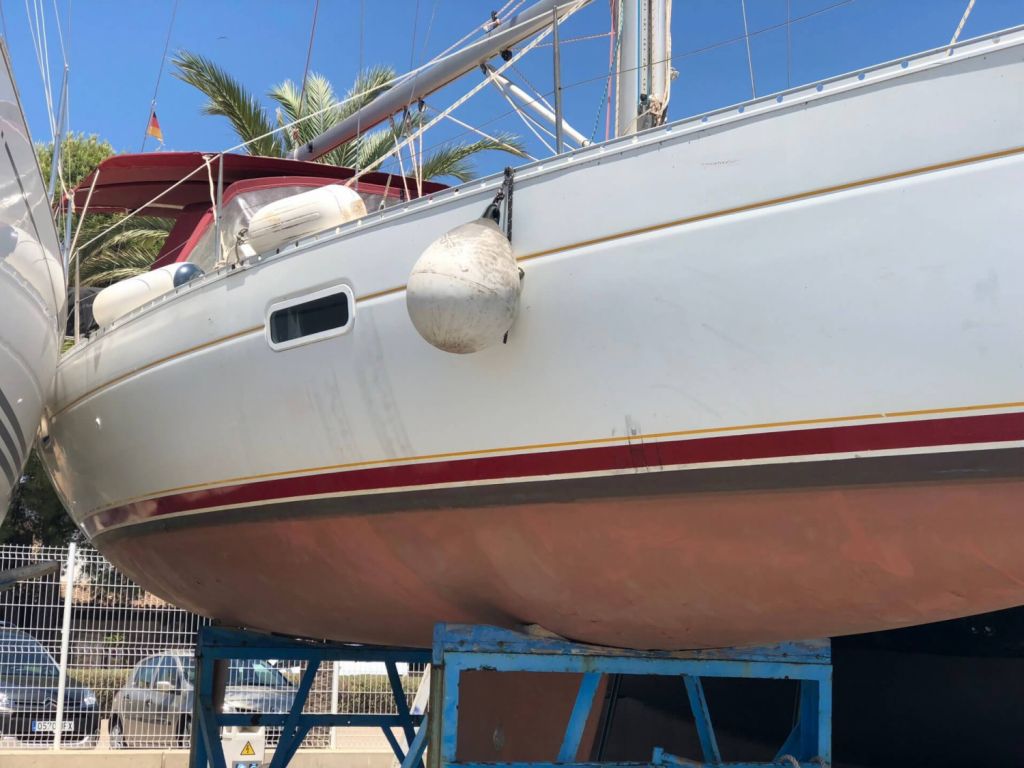
On this page:
The average cost for antifouling, what is included in the cost, what drives the cost up, how to save some money, planning your project.
To make things easier, I've created a table with the cost range for different boat lengths:
Typically, the following is included:
Consumables, environmental, insurance, and disposal charges.
The specifics of any bid you receive to paint your bottom will vary from yard to yard. You need to be careful to read each quote carefully, as there are many small items you may find that add up. To antifoul a boat properly, there are several specific items that should be quoted in detail.
The yard may give you a quote stated on a per foot basis for your boat, or they may give you an estimate based on your boat specifics. I've had yards quote me per foot as an off-the-cuff estimate, then hand me a detailed bill at the end that doesn't really match the per foot estimate. I'd rather see an estimate for hours of labor and lists of materials.
Discuss what it includes before you accept the bid and start work so you understand the final bill.
The specific paint you choose will affect the end price, as paint quality and prices ranges from around $100 a gallon to close to $300. Most yards will estimate how many gallons you need, but you may find the final bill used more (or maybe less!) paint than the estimate included.
The yard should also help you choose a paint, but take care to research your needs yourself so you can make an informed decision and not put on a more expensive paint than you need.
The hourly rate for yard labor may shock you if this is your first boat. But even a task like bottom painting will cost a significant amount per hour. Most quotes for painting will be based on estimated hours, rather than exact hours.
If a marina quotes you "$35/foot" on a painting job, there should not be extra or excessive charges for labor on top of this. The exception is if there are problems found which require extra preparation or work. Most responsible yards will contact you if this happens.
Rubber gloves, sandpaper, masking tape, protective masks, paint stirrers, and Tyvek suits are among the consumable items they may bill you for as part of a bottom job. It surprised me the first time I had a yard paint my boat to see a two page bill for just rolling on the paint. Don't assume the quote is for anything but paint and labor; make sure it includes consumables as these may add hundreds of dollars to the final bill.
Also, don't assume you'll be charged anything less than full retail price from the ship's store for these items, or that you will only pay for what they use. For example, if masking tape is used, you may see a charge for an entire roll. It is best to discuss these things in advance with the yard to avoid surprises.
Many states and countries now leverage various environmental charges and fees associated with marina work. Bottom painting runs afoul of these because of the inherent toxicity of the paint. Yards usually pass these on to the boat owner. They may be a flat fee or a percentage of the total bill. Ask upfront what they will be and if they are mandatory.
What makes this job so expensive? Why is one boat so much more to antifoul than another? Bigger boats cost more to protect, this is unavoidable. But what else makes this
Size of the boat
A longer boat does not have a simple linear relationship between its length and the amount of paint it needs. My son's Capri 22 needed less than a gallon of paint for a thorough paint job; our fifty-three footer takes eight to ten gallons of the same paint for a proper application. We're two-and-a-half times the length, but twenty-five times the displacement.
So many yards have sliding scales on a per foot basis, with bigger boats costing more. The more the displacement of the boat, the more labor and materials it takes to paint it.
Prep Work and the Old Paint
Ideally, your last bottom job would need only a light cleaning and sanding before they apply new paint. Even this is a fair amount of labor. But conditions are rarely ideal.
Paint which is flaking or chipping may require additional preparation. This may mean sanding or filling to smooth flaked areas, and extra preparation where paint may have completely flaked off.
Bottoms with growth or encrustations may take considerably more time to make ready. The yard will pressure wash the bottom when the boat is hauled, but this will not take care of excessive growth. This is a strong argument for regular painting and occasional bottom scrubbing - it can save you a lot of money the next time you paint.
If you change the type or manufacturer of paint, the old paint may have to be completely removed. There may be compatibility issues between types and brands of paint - ignoring them can be an expensive mistake. Sometimes staying with the old brand even if it's not what you want may be a more affordable option if it is still available and legal to use.
Prep work also includes masking off the waterline and underwater gear. If spraying, this will include skirting the boat and protecting it from over-spray.
You should be given an estimate for the prep work needed. Once they start, if the labor will vary more than about 10% of this the yard should contact you to discuss it before proceeding.
Type of Paint
A full study on the types, brands and varieties of paint on the market is beyond this post, but you should be aware there is a considerable range of costs based on the bottom paint you choose. The least expensive bottoms paints are still expensive.
The cheapest paint may not be the best paint for your area or your usage plans. Some paints are more effective in certain regions of the world and this may justify the extra cost. The yard should have familiarity with which types of paints are most effective for local boats.
The absolute cheapest way to antifoul your boat is to do it yourself. It costs you your weekends, not your dollars, and you only buy the supplies you need. If your boat isn't too large and the project manageable, this is a real alternative that a lot of boat owners use. The pros are the lower costs. The cons are that you are dealing with a lot of work with toxic substances and you need to be careful, for your health and for the environment.
If a yard will do the work for you, there are still some steps you can take to make it less expensive. Ways to do this include:
- Supply your own paint. Many yards will let you supply your own even if they are doing the work, and you can often get it for a better price if you buy it yourself. Note: not all yards sell all brands, so choosing a brand the yard does not supply usually requires this.
- Pick the cheaper paint. It may not last as long or be the best choice, but it will provide protection if you're pressed for cash.
- Do some prep work yourself. Sanding bottom paint is a nasty business, but you can do that. It requires elbow grease and protective equipment, but your own labor is cheap. Scrubbing the bottom before it comes out of the water is another way to shortcut preparation.
- Keep your bottom clean. Don't let hard or heavy growth accumulate, this gets very expensive to clean up.
- Paint on a schedule. This goes back to keeping your bottom clean, but if you don't let your paint completely wear out, then you will not have as much growth at the end of the season. If the paint says it's good for two seasons, repaint when you are supposed to.
- Spray vs. Roll. This is a question for your yard, but most yards have different prices for spraying paint versus rolling it as the labor and paint coverage rate is different.
The key to managing your costs is to understand the quotes you get from marinas. Check the following items off to make sure you have estimates so there are no surprises.
- Paint choice and quantity
- Labor hours - rates and estimated time
- Consumables - quantities and costs
- Environmental charges and fees.
Barrie Marfleet
What was the date this article was written? Thanks
Leave a comment
You may also like, do i need to antifoul (bottom paint) my boat - sometimes.
Any time you buy a new boat, you get a work list as long as your arm. Bottom paint is expensive, toxic, and can be difficult to apply. It's an easy task to want to …
the-fastest-boat-bottom-paints-antifouling-for-speed
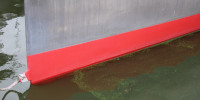
How Often Should You Antifoul a Boat?
Own your first boat within a year on any budget.
A sailboat doesn't have to be expensive if you know what you're doing. If you want to learn how to make your sailing dream reality within a year, leave your email and I'll send you free updates . I don't like spam - I will only send helpful content.
Ready to Own Your First Boat?
Just tell us the best email address to send your tips to:

Sailboat Bottom Paint: 10 Best Paints

Last Updated by
Daniel Wade
June 15, 2022
If you leave your boat without protection, it's beyond question that it will start attracting several marine organisms such as slime, algae, mussels, barnacle, and seaweed. This will cover the bottom of your sailboat and may negatively affect your boat's speed and fuel efficiency.
This is exactly why you need to apply the best sailboat bottom paint on your boat.
The freedom that sailing and being off land gives you are immense and almost unmatched.
But do you know that having multiple organisms such as algae, slime, barnacle, seaweed, and mussels grow on your boat can throw everything out on the wind and leave you with a very unreliable boat?
These pesky hangers will put a huge dent in your boat's speed, its movement, fuel efficiency, and overall aesthetic.
That's why you need the best sailboat bottom paint to greatly minimize any damage that might be caused to your boat's hull by marine biological growth.
Also known as antifouling paint, bottom paint is essentially a paint or coating that's specifically designed with elements that prevent various marine organisms such as algae, seaweed, barnacles, slime, and mussels from attaching themselves to your boat's hull or any other part of the boat that's below the waterline.
One of the most important elements of bottom paint is the inclusion of a biocide and copper is the most common. This may, however, depend on the type of boat that you have, how, and where you always use it.
But because there's an ocean of bottom paints out there on the market, choosing the best sailboat bottom paint can be an overwhelming task for most of us.
Fortunately, you can always count on us to make it a lot easier for you. We've gone through many bottom paints and we do not doubt that we've selected the most effective, reliable, and best sailboat bottom paint.
Our unbiased selections will not only match your needs and budget but will be available in a variety of colors to complement and augment your boat's visual appeal.
Table of contents
What to Consider when Purchasing Sailboat Bottom Paint
If you're on the market for the best sailboat bottom paint, it's crucial to go for top quality; something that will offer efficiency, top speed, and excellent performance for your sailboat. With that in mind, here are a few things to consider before spending your hard-earned money on bottom paint.
Your Sailing Location
Where are you planning to sail? Is it on a freshwater body or in a saltwater location? This is essential in helping you determine whether to go for a bottom paint that's meant for saltwater, freshwater, or both. It's generally recommended that you go for a bottom paint that will serve you perfectly well in both freshwater and saltwater. This gives you the versatility of sailing anywhere without worrying about marine organisms damaging your boat's hull.
Launch Time and Recoat Time
It's important to keep in mind that bottom paint products have specific launch time limits. The idea here is to ensure that you launch it within the required timeframe and ensure that recoating is done as required. You should, therefore, choose a bottom paint that offers a lengthy launch and recoat time while offering durable protection for your vessel is the right thing to do.
Type of Boat
You should determine whether your boat is made of wood, fiberglass, or aluminum and go for bottom paint that's suitable for that particular surface. Many bottom paints work perfectly with fiberglass but some work great with aluminum or wooden surfaces.
The Fouling Condition
Having a deeper idea of the type of fouling that you might deal with can be crucial when buying the right bottom paint for you. Whether you're dealing with slime, algae, mussel, or any other type of marine organism, knowing the type of fouling you're dealing with will make it a lot easier to pick the best sailboat bottom paint for your vessel.
Best Sailboat Bottom Paint
Rust-oleum marine flat boat bottom antifouling paint.
As one of the most respected brand names in the bottom paint industry, Rust-Oleum is known for producing some of the best sailboat bottom paint and the Marine Flat Boat Bottom Antifouling Paint is one of them. This bottom pain is designed to be suitable for various conditions (both freshwater and saltwater) and is designed with moderate copper that works great if you are environment-conscious.
This bottom paint does an excellent job of offering a protective coating to ensure that your boat is free of all sorts of unwanted marine organisms. You'll love this paint because it is thick and spreads so easily and will not be a problem even if you're a beginner. This bottom paint offers top-notch antifouling properties and is very easy to apply as long as you use a soft brush and mix it carefully. This is a great bottom paint choice that will offer a sleek multi-season finish and ensure that your boat's hull is always awesome and in great condition.
- Easy and simple to apply
- Great for both freshwater and saltwater
- Offers gentle fouling conditions
- Excellent in antifouling
- Offer a sleek and awesome finish
- Quite expensive
- Has a very strong smell that can cause headache
Interlux Fiberglass Bottomkote Antifouling Paint
This is another great brand that is considered as one of the best bottom paint in the sailing world. Even though it's a bit pricey, it offers great features that will ensure that your boat remains in tip-top shape. It is an excellent option if you're looking for a sailboat bottom paint that brings to the fore a unique dual resin approach.
This is a very reliable bottom paint that will not only prevent your boat's hull from the effect of marine organisms but also prevent premature deterioration. It offers an awesome polishing action and is perfecting if you want to discard unnecessary paint buildup. This bottom paint is also very economical and a small quantity will cover a considerable surface area of your boat's bottom.
This is, without a doubt, a superb buy in terms of its practicality and economical nature. It is excellently formulated to prevent marine organisms from damaging your boat and also to ensure that premature wear and tear doesn't exist in your vocabulary.
- It's formulated with a unique dual resin approach to prevent premature wear and tear
- It prevents early decline
- It prevents unnecessary paint buildup
- Great for ensuring that your boat is fuel effective
- Great for all conditions (both freshwater and saltwater)
- It's expensive
- The quantity and size can be misleading
TotalBoat JD Select Bottom Paint
As one of the few bottom paints that's formulated with low Volatile Organic Compounds (VOC), this bottom paint is one of the most cost-effective on this list. With one gallon, you can easily cover about 400 square feet and the application is a breeze since it's even much easier to clean up.
When you purchase this bottom paint, the package will come complete with a pair of latex gloves, a wooden stir stick, an abrasive pad, a metal tray kit, a paint suit, a roller, a painter's tape, and many more. The inclusion of all these accessories makes it a quite cost-effective purchase.
Again, this is one of the most durable bottom paints. Apply it on your boat's hull and you're guaranteed that it will offer excellent protection for the next 18 months. On the downside, this paint is too thick and you'll have to buy an excellent thinner for it to work perfectly.
Nonetheless, this is an ablative bottom paint that is easy to apply and does an excellent job of protecting your boat's bottom for close to two years.
- Perfect for all conditions
- Easy to apply and clean up
- Can improve your boat's speed and fuel efficiency
- Comes with all accessories required for the paint job
- It's one of the best water-based bottom paint products in the industry
- It contains low VOC
- You'll need a top-quality thinner for it to work perfectly
Aquaguard Water-based Antifouling Bottom Paint
An excellent choice for both wooden and fiberglass boats, this is the most perfect bottom point for saltwater conditions. This is a water-based bottom paint that's very easy to apply and clean up (using soap and water) and is formulated with an ablative action that makes it superb for preventing any marine organism that may negatively affect your boat.
This is a bottom paint that is EPA-approved and surpasses the set VOC standards. It has an extended shelf life and offers durable protection for your sailboat. It doesn't contain toxic fumes and is great even for novices. Its drying time is also excellent, so you won't wait for far too long to get your boat out there on the water.
- Excellent for saltwater conditions
- Application and cleaning is very easy
- It's approved by the US EPA
- You don't have to use a primer
- The color selection is limited
- A bit pricey
Pettit Hydrocoat
This is another water-based bottom paint that offers outstanding ablative properties that will protect your boat from marine organisms throughout the seasons. It offers good value for money and is easy to apply and clean up with just water and soap.
We're talking about a bottom paint product that will protect your boat's hull for months on end. You also do not need a full tank of the paint to complete the job. With just a single gallon, you can be sure to complete an area as big as 430 square feet.
This is also one of the few bottom paints that can perfectly prevent your boat from damage when being trailered, launched, or beached. More importantly, it's not irritating to the nose and eyes because it has low VOC.
- It will dry in 3 hours
- It's easy to apply and clean up
- It offers multi-season protection
- It's not irritating to the eyes and nose
- It's quite economical
- May not be the best in antifouling
- You have to apply at least two coats
SEA HAWK PAINTS Aluminum Boat Paint
One of the best aluminum boat paints in the market, this bottom paint is formulated to offer quick-dry corrosion-blocking, high-solid features. This bottom paint is specifically manufactured to be used in aluminum boats and doesn't require the addition of any primer.
While it doesn't have an antifouling feature, it stands out and can be used both below and above the waterline as it is risk-free and free or chromate. It is also formulated to offer a unique dual resin approach and can be used both as paint and a primer at the same time.
This is a great paint for both freshwater and saltwater conditions and can be applied as a primer or topcoat on a fiberglass boat. This is an excellent sailboat boat bottom paint that's worth every coin as it is practical, versatile, and can combat both rusting and lifting.
- The application and cleanup process is easy
- Great for both freshwater and saltwater conditions
- It doesn't require a primer
- Can be used as primer or topcoat in fiberglass boats
- Can prevent rusting and lifting
- It has quick-dry and anti-corrosion features
- Can produce deadly fumes
TotalBoat Spartan Boat Bottom Paint
If you've been looking for a practical, reliable, and cost-effecting bottom paint that will offer durable performance and protection, the Spartan Boat Bottom Paint. Perfect for both freshwater and saltwater, it can be perfect for protecting your boat and ensuring that it is fuel-efficient and reliable.
This bottom paint is formulated with advanced copolymer ablative to ensure that it doesn't deteriorate instantly. This is a very dependable bottom paint that will serve you perfectly throughout the year and will ensure that your boat easily defies fouling while reducing unnecessary buildup and sanding on your boat.
This is a very adaptable bottom paint that not only offers great value for money but is very easy to apply. More importantly, it is very durable and will protect your vessel for at least 12 months on any type of water.
- Great for all types of water
- It offers a very durable protection
- Available in a wide variety of color selection
- Offer a visually appealing abrasion-proof finish
- The included accessories aren't up to the right quality
To this end, we must put a lot of emphasis on the importance of having the right bottom paint for your boat. In addition to being an antifouling agent, bottom paint will significantly increase the fuel efficiency of your boat and ensure that it performs optimally at all times. Of course, you do not want to diminish your sailing escapades or have your nice and beautiful vessel damaged by marine organisms just because you didn't apply the right sailboat bottom paint. If you're unsure how to proceed, here's how to paint a sailboat.
Related Articles
I've personally had thousands of questions about sailing and sailboats over the years. As I learn and experience sailing, and the community, I share the answers that work and make sense to me, here on Life of Sailing.
by this author
Repairs and Maintenance
Sailboat Upgrades
Most Recent

What Does "Sailing By The Lee" Mean?
October 3, 2023

The Best Sailing Schools And Programs: Reviews & Ratings
September 26, 2023
Important Legal Info
Lifeofsailing.com is a participant in the Amazon Services LLC Associates Program, an affiliate advertising program designed to provide a means for sites to earn advertising fees by advertising and linking to Amazon. This site also participates in other affiliate programs and is compensated for referring traffic and business to these companies.
Similar Posts

How To Choose The Right Sailing Instructor
August 16, 2023

Cost To Sail Around The World
May 16, 2023

Small Sailboat Sizes: A Complete Guide
October 30, 2022
Popular Posts

Best Liveaboard Catamaran Sailboats
December 28, 2023

Can a Novice Sail Around the World?
Elizabeth O'Malley

4 Best Electric Outboard Motors

How Long Did It Take The Vikings To Sail To England?

10 Best Sailboat Brands (And Why)
December 20, 2023

7 Best Places To Liveaboard A Sailboat
Get the best sailing content.
Top Rated Posts
Lifeofsailing.com is a participant in the Amazon Services LLC Associates Program, an affiliate advertising program designed to provide a means for sites to earn advertising fees by advertising and linking to Amazon. This site also participates in other affiliate programs and is compensated for referring traffic and business to these companies. (866) 342-SAIL
© 2024 Life of Sailing Email: [email protected] Address: 11816 Inwood Rd #3024 Dallas, TX 75244 Disclaimer Privacy Policy

Boating Basics Online is reader-supported. When you buy via our links, we may earn a commission at no cost to you. Learn more
How Much Does It Cost to Paint a Boat? Updated Price
Written by J. Harvey / Fact checked by S. Numbers
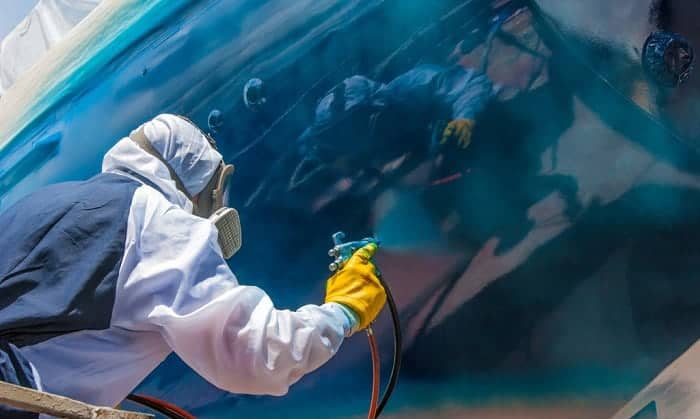
Does your boat look like it needs something fresh for a change? Good paint can be an excellent investment for your vessel. Aside from its aesthetic benefits, it can also protect the walls of your boat. The copper in its color keeps microorganism growth minimal.
You may ask how much does it cost to paint a boat. Is it worth it?
Painting a boat is mostly done by professionals, and this cost can range from low to high prices. Interestingly, there are a lot of options when it comes to making your boat look sleek and brand new again.
Table of Contents
What Are the Kinds of Boat Painting?
How much does a boat painting cost, what are the factors that affect the cost of boat painting, can i do a diy painting on my boat, what extra costs should i anticipate for boat painting.
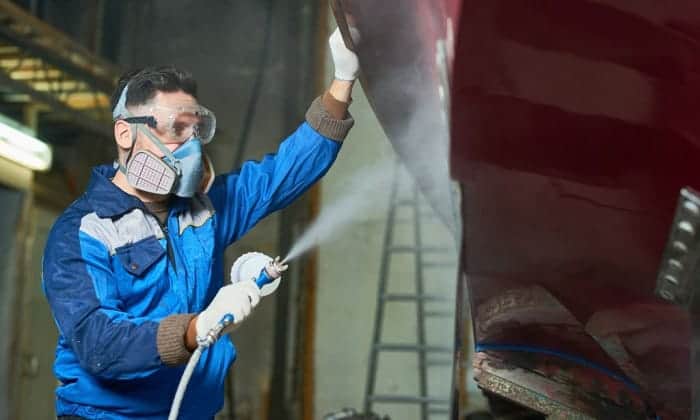
Painting a boat can be a hassle. It can take a toll on you if you do not know the basics.
For starters, painting a boat can consist of bottom painting, topside painting, and both.
Simply, topside painting is furnishing your boat from the water level and above. Bottom painting can mean the other way around: painting it below the waterline when the boat afloat.
Topside Painting
If you are concerned with your boat’s aesthetic look, this kind of painting will boast your favorite color. Your boat can outshine the others if you have the means to coat it with high-standard paint with a unique color.
This kind of painting includes repairs on your boat’s body, preparing the surface, and primer application. It sometimes also consists of the hull , the deck, and the interiors.
One of the main reasons topside painting is necessary is for boat protection with water and sunlight exposure.
Bottom Painting
As previously mentioned, this kind of painting includes painting the boat below the water level. Hence, not all boats are bottom painted since most boat owners do not consider this practical value. However, your boat can benefit maximally with bottom painting if it is continuously on the dock.
Deck Painting
Most boats with a deck can opt to have their decks repainted and refurbished . This area in the ship can get slippery; hence it may require more frequent repainting than its body. This painting job can stand alone, compared to having the whole topside of the boat painted.
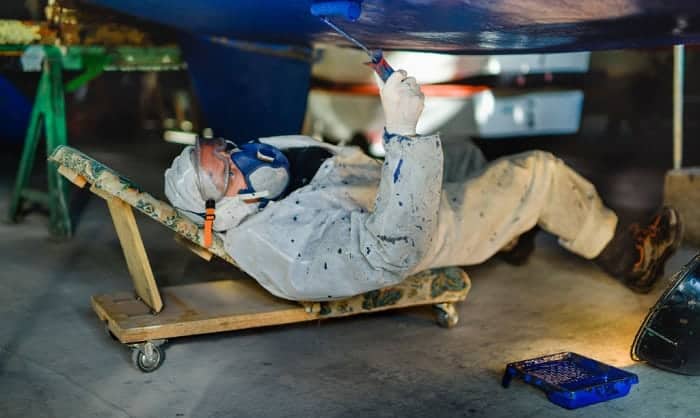
Professional painting is a lot more expensive than doing it yourself. The cost is usually calculated per linear foot. Professional topside painting can range from $100 to $400. On average, it can be around $200.
Bottom painting ranges from $15 to $100 per linear foot professionally. Approximate of $20 is the estimated average for bottom painting.
The range of professional costs for boat painting depends on a variety of factors. You need to consider if this is a repainting job or a brand-new painting project. Here are the factors that might affect the cost of boat painting:
- The bigger the boat, the more surface area is included for professional painters. It also entails more paint to cover the boat’s surface.
- Boat type – The boat’s material is also among the deciding factors that will make painting cost less or more. An aluminum boat has a different painting process than a fiberglass one. The various techniques in between will raise the price.
- Boat condition – the amount of preparation needed to paint the boat can sometimes take more time than the actual painting job. If the ship is slightly wrecked, it may need more refurbishing. This preparation may include sanding, filling, and other possible repairs.
- Paint type – topside painting has a variety of pain types that you can choose from. The premium ones will cost you more.
- The boat’s common location is your ship’s location; if your ship is still on the water, on a trailer, or just in the storage area, will also affect the price. A boat that needs to be hauled may cost higher.
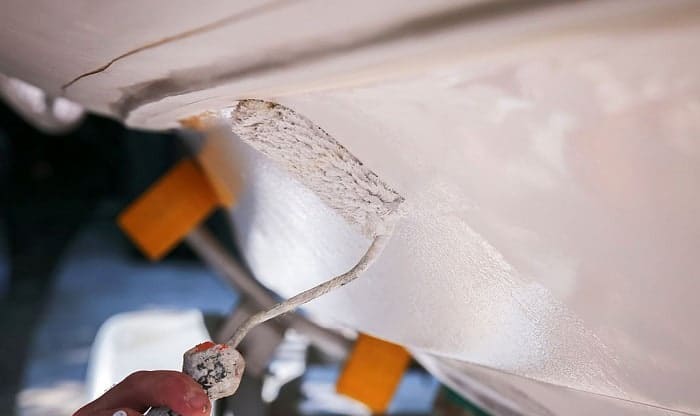
Painting a boat can be done at your convenience with a DIY boat painting. But this activity requires you to know how to prep your boat prior, how to de-stain the surface, how much paint to use, and others.
Doing it yourself can be tedious, but this also means cutting off on the budget. Beyond that, a bottom painting calculator can also guide you on how much paint can be used based on your boat’s size.
Aside from getting a new look for your boat, there are still boat painting preparations that can cost on top of your anticipated fees.
Paint Stripping
When your boat has worn off its previous paint, most professionals strip the previous paint away. It gives them the chance to inspect for other boat damage. Stripping off the paint entirely also gives the professionals an opportunity to prime it better.
Customization
Some boat owners maximize the painting job for their boat by getting it customized. Aside from the paint, they have their initials, logos, and other customization projects. It may be an additional burden for your pockets, but this painting job adds personality to your vessel. It also features a signature look for your boat on the dock.
The protective benefits of painting a boat are probably why boat owners preserve their boats’ looks in great shape. A high-standard paint keeps the growth of microorganisms at bay. Aside from that, having a unique color makes their boat standout on the docks.
How much does it cost to paint a boat? – Knowing the answer to this question will give you a financial estimate of your expenses in the future.
It considers the health of your boat’s walls and its aesthetic look on its own. The basics of boat painting cost can help you if you want to do it yourself in the future.

“I am James Harvey – founder of Boating Basics Online. It is established with the drive to help out first-time boaters, which are those desiring to explore their way through the water. So if you are new to boating, start from here with me. “
Free Shipping On All Orders!
- Epoxy Resins
- Polyester Resin
- Urethane Resins
- Epoxy Project Supplies
- Antifouling Paints
- Topside Paints
- Thinners & Solvents
- Paint Supplies
- Wood Oils & Finishes
- Wood Finishing Supplies
- Cleaning & Polishing
- Accessories
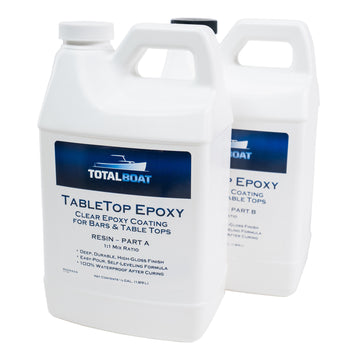
Table Top Epoxy
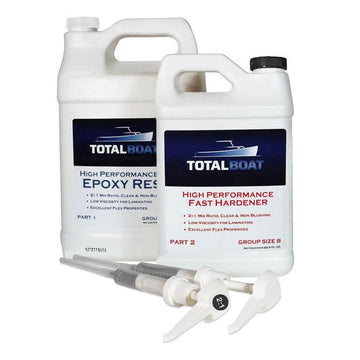
Clear High Performance Epoxy Kits
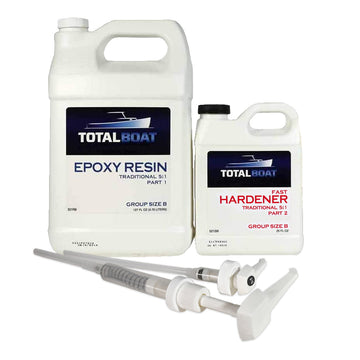
5:1 Traditional Epoxy Resin Kits
- Thinners & Solvents
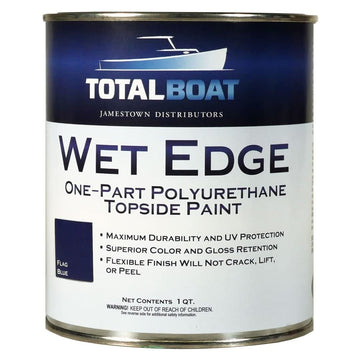
Wet Edge Topside Paint
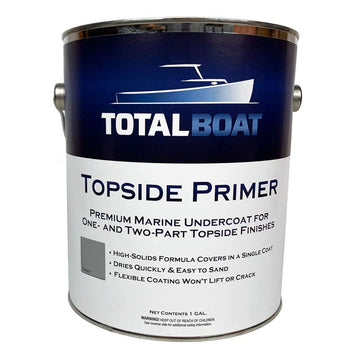
Premium Marine Topside Primer
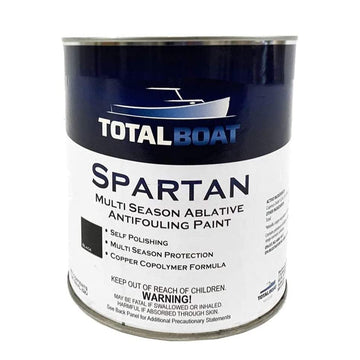
Spartan Multi-Season Antifouling Paint
- Wood Finishes
- Wood Oils & Finishes
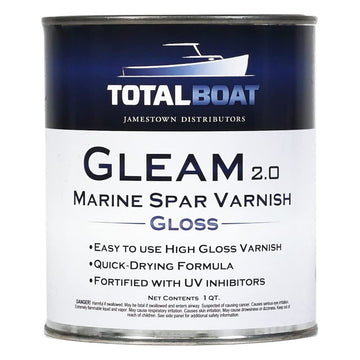
Gleam 2.0 Marine Spar Varnish
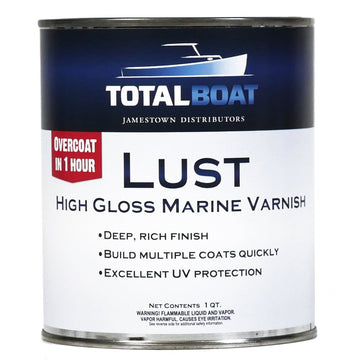
Lust Rapid Recoat Marine Spar Varnish
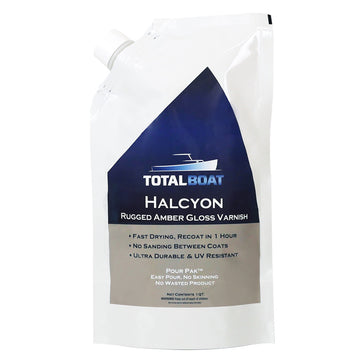
Halcyon Water-Based Marine Varnish
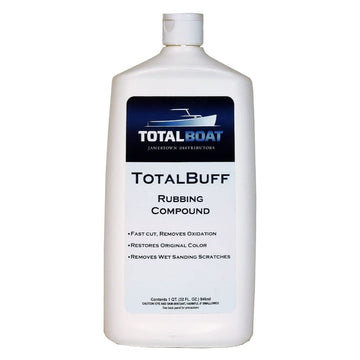
TotalBuff Rubbing Compound
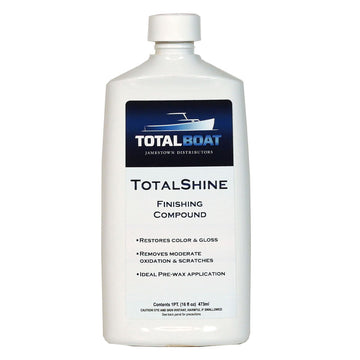
TotalShine Finishing Compound
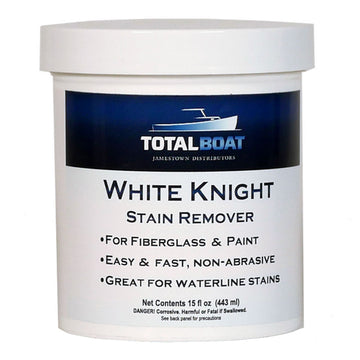
White Knight Fiberglass Stain Remover
- TotalBoat Gear
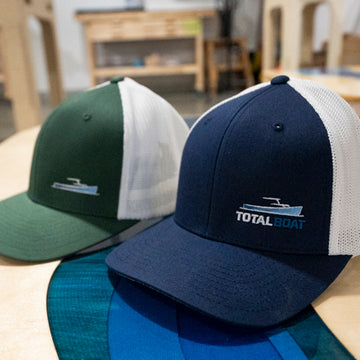
FlexFit Fitted Mesh Back Baseball Cap
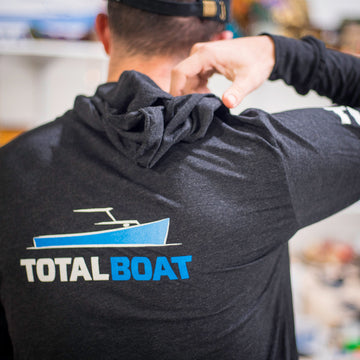
Men’s Long Sleeve T-Shirt Hoodie
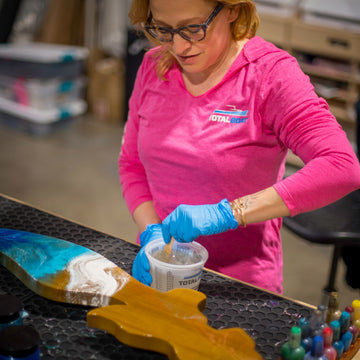

Women’s Long Sleeve T-Shirt Hoodie
FREE SHIPPING with a minimum puchase of $1,200.00 You are $10.00 away from your free shipping!
Shipping, taxes, and dicount codes calculated at checkout.
BOTTOM PAINTING
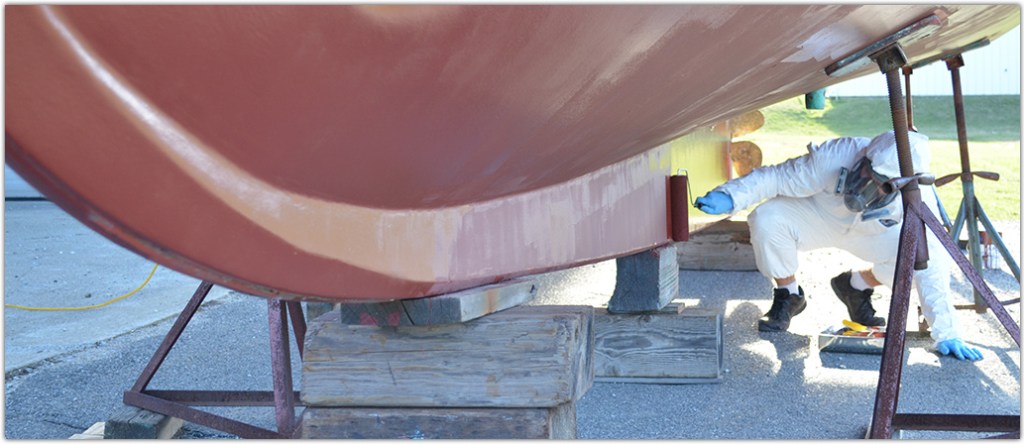
As a boat owner, getting dragged to the depths of the ocean by a giant sea monster is probably not high on your list of concerns. But make no mistake, there are some very foul creatures lurking beneath the waves.
We’re talking microscopic sea monsters: acorn barnacles, zebra mussels and slime-causing bacteria that cause serious hull drag, and wallet drain from higher fuel costs and repair bills.
You may not even know they’re there until it’s too late because they don’t come at you flailing ferocious tentacles, at least not ones you can see. What you will see—and want to prevent—is the ugly, dirty, slimy mess they make on the bottom of your hull that decreases your speed and increases your fuel bill because your engine has to work harder. A fouled hull bottom is also a safety risk because it can decrease your ability to maneuver.
Battle the barnacles and other biofouling bottom huggers with the righ bottom paint for smoother sailing.
Choosing an Antifouling Bottom Paint
- Location, Location, Location
- Types of Antifouling Bottom Paint
- Which Bottom Paint is Best for Your Boat?
- Figuring How Much Paint You Need
How to Strike a Waterline On Your Boat
Bottom painting equipment, surface prep for bottom painting, best conditions for bottom painting, bottom painting like a pro.
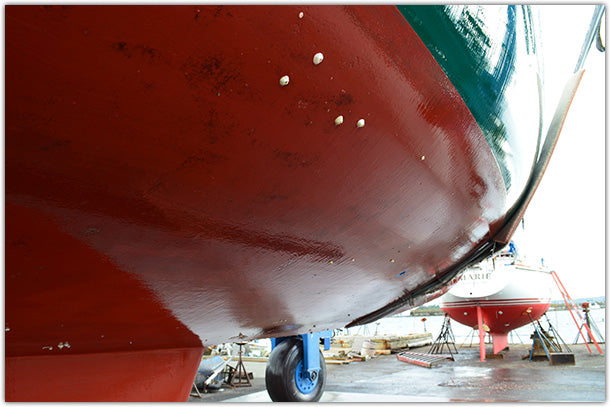
The purpose of applying antifouling bottom paint is to prevent hard biofouling organisms like mussels, barnacles, and tubeworms, and soft growth like weeds and algae (slime!) from attaching to your hull below the waterline.
There are several different antifouling coatings available, with new ones being formulated all the time, making it very difficult to choose the paint that’s right for your boat and your budget. Some coatings work better in different locations, including fresh or salt water. Some are more environmentally friendly than others, and some cost more based on the type of biocide and the protection they provide.
The key antifouling ingredient in bottom paint is some type of biocide for deterring hard marine growth. Some antifouling paints also include an algaecide for preventing soft growth.
Biocide basics : For centuries, some form of copper has been used successfully to prevent the attachment of barnacles and other marine growth on hull bottoms. Today, the type of copper most commonly contained in antifouling paint is either cuprous oxide or cuprous thiocyanate. Cuprous thiocyanate has the added benefits of being a lighter copper in terms of color, so it produces brighter, truer paint colors. Also, paints using cuprous thiocyanate use half the amount of copper used in conventional, heavier cuprous oxide paints.
Because copper in the concentrations used in antifouling paints is a potential threat to some marine ecosystems, there are now equally effective, eco-friendly, antifouling paints that contain a metal-free biocide called Econea™ (main ingredient is tralopyril). Econea’s main benefit is that it dissolves after it is shed into the water, leaving no byproduct to harm marine life. Its secondary benefit is that it allows for the creation of brightly colored paints, unlike bottom paints containing cuprous oxide as the biocide.
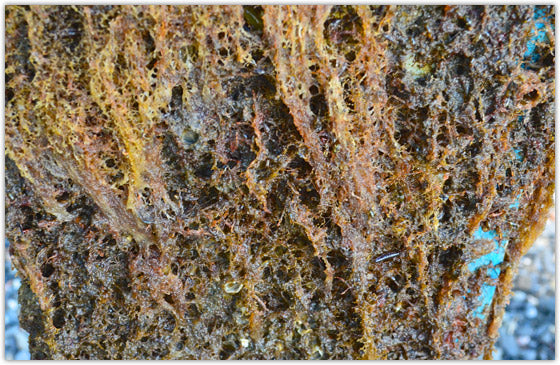
Algaecide basics: If you use your boat in an area where slime, algae, and grass growth on the bottom of your hull are common, you need an antifouling paint that also contains an algaecide to prevent this soft growth. In the past, some antifouling paints contained an algaecide called Irgarol, which is no longer being used. Irgarol was discontinued because of its persistence after release into the water, and harmful effects on marine life. Zinc pyrithione (Zinc Omadine™) is now the slime-fighting agent used in many antifouling bottom paints. Its effectiveness is similar to Irgarol, but it dissipates quickly and harmlessly into marine or fresh water ecosystems. Zinc pyrithione is found in chemical solvent-based and water-based antifouling marine paints.
Chemical solvent-based or water-based antifouling paint? Another consideration is the type of solvent in the paint. Solvents keep the biocide, algaecide (if included), and pigment suspended in the paint so they’re distributed evenly in the coating as it’s applied to the hull surface. In the past, most antifouling paints contained harsh chemical solvents, and required the use of chemical solvents for thinning and cleanup. Those harsh chemical solvents contain toxic VOCs (volatile organic compounds) that evaporate easily into the atmosphere. To help meet environmental regulations in some areas of the country, and the world, there are now water-based paints, that also use water for thinning and cleanup. Many of these water-based antifouling paints contain the biocide Econea, and zinc pyrithione as the algaecide, because both dissolve in the water after release.
Won’t a water-based antifouling paint just dissolve and leave the hull unprotected while the boat is in the water? : The short answer is no. As the water-based paint cures, the water evaporates, leaving behind a protective film of biocide and/or algaecide, and pigment.
Teflon and vinyl bottom paints : Teflon paints are expensive, dry quickly, cure to a very thin film, and are ideal for fresh water areas where algae is a problem. Vinyl bottom paints are hard bottom paints that can be burnished smooth for racing, and are especially effective in saltwater, though not as effective as ablative paints for battling biofouling organisms. Both Teflon and vinyl bottom paints are used more to enhance performance, as in race boats, instead of antifouling.
Proprietary two-part bottom coatings : These products are new and expensive, using patented chemical formulas to create a hard and very slippery biofilm that doesn’t allow living organisms to attach to the boat.
Location, Location, Location
Deciding on bottom paint is a regional, sometimes section-of-the-harbor-specific choice. It’s based on lots of variables like water temperature, silt, substrate, pollution, water flow, biofouling organisms present, and the frequency and type of boating you do.
Making that choice is made even harder because a bottom paint that works in one part of the harbor may not be as effective a few hundred yards away in that same harbor–even on the same type of boat.
The general consensus is there’s more fouling activity in warmer water and still water, and less growth in water that’s colder or where there’s more current flowing beneath the hull. It’s also harder for biofoulers to attach to a moving target, so the more you use your boat, the cleaner the bottom should remain.
At any rate, it’s always a good idea to ask fellow boaters, local boatyard professionals, or refer to our ongoing bottom paint research , to help pinpoint paints that work best where your boat floats.
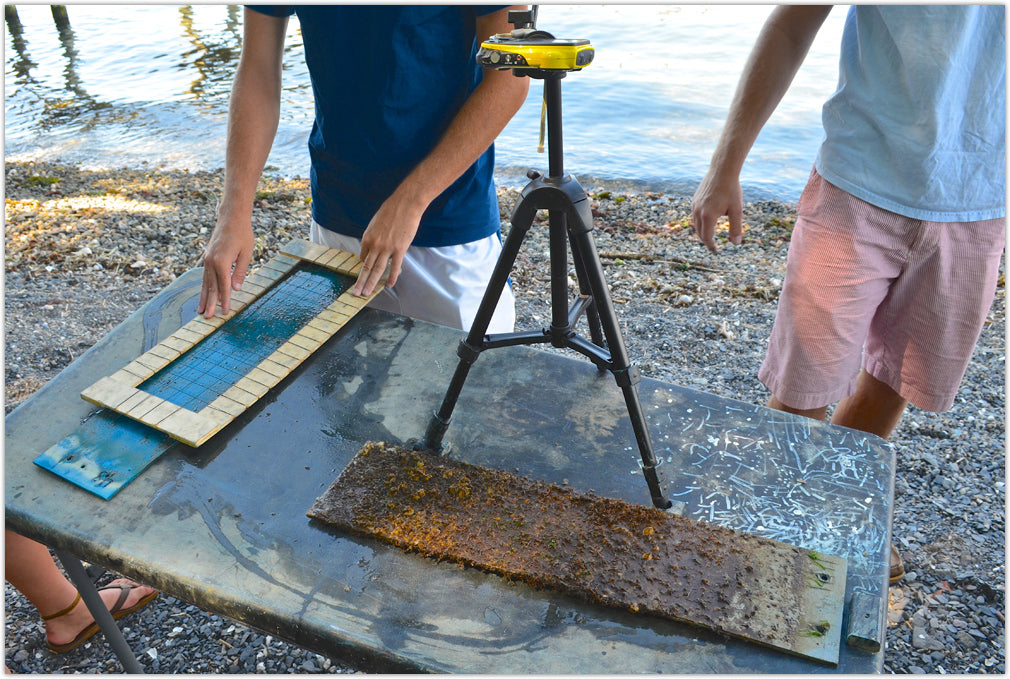
Types of Antifouling Bottom Paint
Bottom paints are usually one of two types: hard or ablative, with variations whose effectiveness depends on how much time the boat spends in the water, and how often it moves.
Hard bottom paints are typically less expensive than ablative antifouling paints. However, hard paints are effective for a single single season, and they build up season after season, eventually requiring costly removal. Ablative paints come in single-season and multiseason varieties and don’t build up.
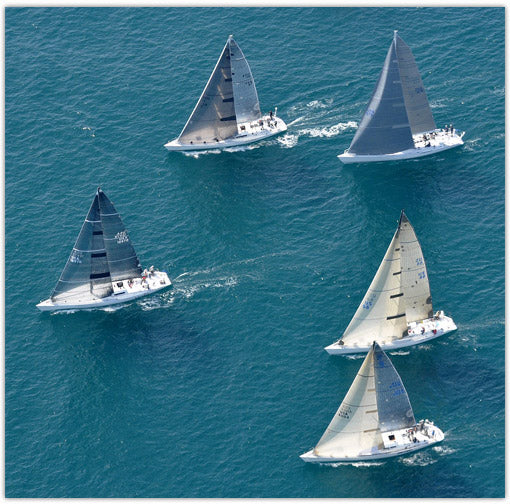
Hard bottom paint dries hard, stays that way, and doesn’t wear away gradually like an ablative paint. It works constantly while the boat is in the water, regardless of whether the boat is moving, and stops working once all its copper biocide gradually leaches out. So the coating can still be in great shape, but the biocide is gone and so is the protection. Water can seep in to the unprotected coating and damage the hull. Also, because hard bottom paint doesn’t wear away, it builds up and eventually has to be removed–a costly, labor-intensive endeavor.
Another problem for hard bottom paints is they lose their copper faster–and their effectiveness–if the boat is kept out of the water more than 60 days after applying bottom paint. For this reason, hard bottom paint is typically used on boats that remain in the water for extended periods. It’s also great for boats operated at faster speeds, like racing boats, because it can be burnished to increase hull smoothness and speed, unlike ablative bottom paints.
Ablative bottom paint wears away gradually as water flows under the hull, either from use or tidal movements. As the paint wears away, it exposes a fresh burst of biocide to keep biofoulers from attaching to the surface. There are ablative paints for multiple season use, and others that are effective for a single season. The single-season ablatives are typically less expensive than the multiple season ablatives.
For most ablative paints to work effectively, motion is required, so this paint is best if you use your boat fairly often–at least once a week. A hull painted with a single-season ablative antifouling paint can be pulled and left out of the water up to two weeks, but will require a light scuffing with a Scotch-Brite pad to reactivate the antifouling properties directly prior to launching.
A hull coated with a multi-season ablative can be pulled and left out of the water up to two weeks, without scuffing to reactivate the antifouling. However, after two weeks, scuffing is required directly before launching.
Self-polishing, copolymer ablative bottom paint also wears away gradually to expose fresh layers of biocide. However, it’s effective whether or not the boat is moving because it uses a self-polishing, controlled-release, copper copolymer formula. Some copolymer ablatives can last multiple seasons, requiring only a light scuffing to reactivate the antifouling in the spring, directly before launching.
Hybrid copolymer ablative bottom paint has all the self-polishing, controlled-release biocide benefits of a copolymer ablative. The difference is that it can also be burnished–like a hard bottom paint–for smoothness and speed, unlike other ablative bottom paints. And there’s less buildup to remove next season, as with hard bottom paints.
Which Bottom Paint is Best for Your Boat?
Preventing biofouling is not a one-shot-and-you’re-done deal, and no bottom paint is best for every boat. Your decision depends on answers to these practical questions.
What type of hull do you have? Most bottom paints contain copper as their antifouling biocide, which is fine for wooden, and fiberglass/gelcoat hulls, but causes galvanic corrosion, which will destroy a pontoon boat or an aluminum hull. For use on aluminum hulls, aluminum bottom paint typically uses a copper-free biocide such as Econea. Underwater metals such as outdrives and trim tabs also need this metal-free antifouling paint. And don’t forget the bottom of your inflatable, it needs protection, too. Inflatable bottom paint is ablative, so it wears away gradually, and is designed not to crack or peel while the boat is being rolled up, or after drying. What kind of water is your boat sitting in, and what’s the water temperature? In terms of temperature, biofouling levels are typically higher in warmer waters than cooler waters. Fresh water biofouling, while not as severe as saltwater (marine) biofouling, still poses problems which are compounded if the water is brackish or polluted. By far the biggest challenge comes from hard, marine biofouling organisms such as zebra mussels and barnacles, which destroy the hull surface and allow moisture in, causing blistering and other expensive damage. If moderate to heavy fouling is a problem in your region, you might consider a bottom paint that offers greater protection and lets you haul and relaunch without repainting, such as a multi-season paint. In lower fouling waters, you can get adequate single-season protection from a more economical bottom paint . The copper biocide (cuprous oxide or cuprous thiocyanate) or copper-free biocide (Econea) in these paints is designed primarily to combat hard shell marine growth. If slime is a problem in your area, use a slime-shedding bottom paint boosted with a slime-fighting agent (zinc pyrithione) that controls slime growth at the waterline. How and when do you use your boat? For example, do you trailer your boat? If so, you should use a harder ablative bottom paint that can withstand trailering. Do you race it or just like to go fast? Try a hybrid copolymer ablative that allows you to burnish the surface, and provides good single or multiple season protection. Do you go out every weekend? Every day? Do you want to be able to do your bottom painting at the end of the season so you’re ready to launch first thing in the spring? At TotalBoat, we’re DIY boaters that create products to suit every type of use in all types of waters. Do you live in an area that restricts the use of solvent and copper-based bottom paints? To address ever-increasing environmental regulations, some ablative bottom paints are now water-based and/or copper-free, containing an environmentally friendly biocide called Econea™, and fewer volatile organic compounds (VOCs). Other water-based ablatives contain copper for added antifouling protection, but offer easy soap and water cleanup. How much money do you want to spend on bottom painting? With bottom paint, usually the more biocide, or different types of biocide, the greater the cost. Also certain properties, like self-polishing, single or multi-season effectiveness, or slime-fighting ability, require the inclusion of certain additives, which can increase the cost. If you don’t need it, you shouldn’t have to pay for it, which is why we created a complete line of bottom paints to balance every boater’s needs and budget.
Figuring How Much Paint You Need
Figuring out the approximate surface area (in square feet) of your hull below the waterline is a good way to determine the amount of bottom paint you’ll need. Here’s an easy formula to use:
Length x Beam x .85
How heavily you apply the bottom paint is another factor in determining the quantity. The amounts below assume you want to coat the surface as thickly as possible without causing runs, and that you are applying two coats. For specific quantities, always refer to the manufacturer’s details on coverage areas.
Applying two coats of bottom paint up to the old waterline is a fairly straightforward task–if you know where the waterline is. Sometimes the line gets covered up by topside coatings, or it needs to be raised as the boat gets outfitted for cruising. Or you may have a new boat and need to find the waterline. Here’s a simple way to mark the waterline on your boat in preparation for bottom painting.
What You’ll Need for Bottom Painting
The safest and best way to do a DIY bottom paint job involves applying the paint with a brush or roller. Due to the substantial toxic hazards, spraying is not recommended.
If using a solvent-based antifouling paint, it’s important to use solvent-resistant roller covers, brushes, and paint trays and liners because the solvents in bottom paint are strong enough to dissolve regular household-type versions of these painting tools.
- Personal protection for sanding – paint suit with hood , goggles, and a respirator with appropriate cartridges, and gloves
- If bottom paint is cracking and peeling or otherwise requires removal (as in the case of hard bottom paint) use chemical stripper to remove it. Our TotalBoat TotalStrip paint remover is safe for gelcoat and fiberglass, and it’s easy to apply, odor-free, biodegradable, can strip up to 25 layers in a single application, requires no acid wash neutralization, and cleans up easily with just plain water. It’s also very effective on bottom paint.
- If previous bottom paint is in good condition and not too thick (only a couple of previous coats), you don’t need to sand it down, just scuff it up using a clean, maroon Scotch-Brite pad
- Paint scraper for removing loose or chipping antifouling paint to clean up the hull bottom before sanding
- When sanding down old bottom paint, use 80-grit large diameter sanding disks and a right angle grinder or dustless sander (recommended). 80-grit paper is the most common grit for sanding antifouling paint. Always use a dustless sander to keep the toxic antifouling paint sanding residue contained.
- Masking tape – solvent and water-resistant tape is ideal for lengthy bottom painting jobs that require two coats. This clean-release masking tape lifts off easily, leaving no gummy residue.
- Scratch-free cleaning and wiping rags and acetone or mineral spirits for removing surface dust and residue
- Solvent-resistant paint brush or 3/8" nap roller, paint tray and liner, plus small-width chip brushes for cutting in
- Drop cloths for any sanding debris, and for catching paint drips and spills
To ensure the best possible bond and the most effective antifouling results, take time to assess the type and amount of surface preparation needed. Typically, most ablative bottom paints can be applied over hard paints, but not the other way around. Also most other antifouling paints can’t be painted over vinyl or Teflon bottom paints. Incompatible paints must be removed first. Substrate matters, too, so for example, if you’re painting on steel or aluminum, check that you coat the surface with an appropriate metal primer first.Incompatible bottom paint or previous bottom paint that is extremely deteriorated should be stripped first. Use a chemical stripper that works with bottom paint to remove it. If you stripped the old antifouling and found hull damage or damage to the barrier coat, or if you’re painting a new boat for the first time, you’ll need to apply an epoxy barrier coat before applying bottom paint.
Cleaning Tips
In many cases, you’ll be painting over a previous bottom paint job that’s in good condition, so you don’t need to strip the paint or sand. Just chip away any loose paint with a paint scraper or putty knife, then abrade with a medium-grade 3M ScotchBrite pad, then wipe the surface with a clean, lint-free cheesecloth, rag, or tack cloth dampened with acetone or mineral spirits (or thinner recommended by the paint manufacturer) to remove residual dust and grease, let dry, then apply masking tape.
Sanding Tips
If you need to sand, sanding makes a mess, so first lay down some drop cloths under and around your work area. Sanding bottom paint also creates toxic dust, so use a dustless sander. And protect your exposed eyes, skin, and lungs with high-quality protective equipment before you begin sanding.
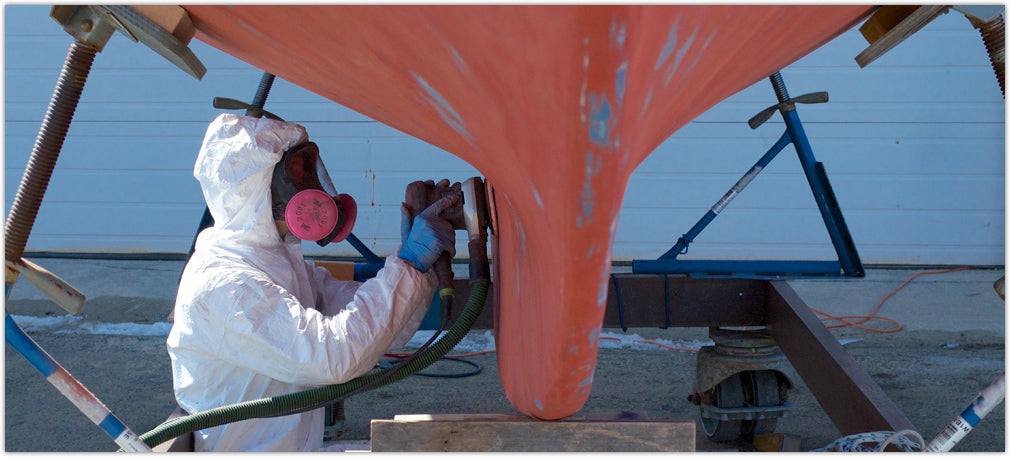
Masking Tips
For the cleanest line, try to position the tape as close to the bootstripe as you can, beginning at a natural start point in the line. Draw the tape out slowly, outlining every 1.5 to 2 feet. In addition, mask around underwater metals to protect them from contact with any copper-based antifouling paint.
Use 80-grit sandpaper to sand the entire bottom to smooth it out and remove any high or uneven spots. Sand lightly so you don’t sand through a protective barrier coat or damage gelcoat. After sanding, wipe down the surface using the solvent recommended by the bottom paint manufacturer.
After masking, and before painting, wipe the surface with a clean, lint-free cloth to remove any residual dust or dirt.
Getting great performance from your antifouling paint takes more than just completing the surface prep properly so the paint has every chance to bond mechanically and chemically to the hull. You also have to apply the paint when the timing is right in terms of temperature and humidity.
Resist the urge to start painting until temperatures are between 50°-85°F and the humidity is between 65 and 90%, or according to the manufacturer’s specifications. Be patient and wait for the weather to cooperate. You’ll be rewarded not just with optimal antifouling effectiveness, but with better looking, longer lasting results.
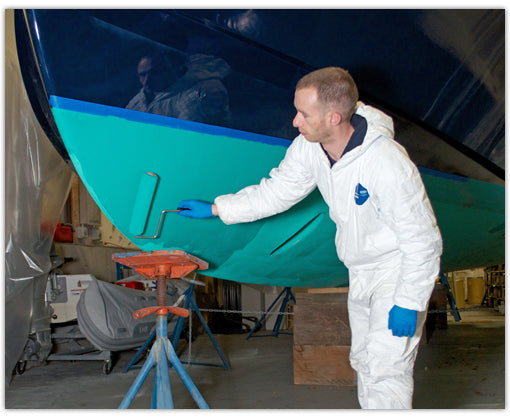
Before you start, pay attention to the dry time between coats and the recommended number of coats, as indicated by the manufacturer. Also, be sure to check if there are any maximum limits on the amount of time the boat can remain out of the water after bottom painting and prior to launch. For example, copolymer ablative paints dry faster, which means their overcoating times are shorter. They also have longer or unlimited launch windows.
Once you know the characteristics of your coating, and you’re ready to paint, here are some tips to expedite the process.
- To make it easier to get as much copper off the bottom of the can and into the paint, take it to a paint shop and have it shaken first. This will make it easier for you to stir the paint thoroughly.
- Do not thin bottom paint or it will lose its antifouling effectiveness.
- Use a solvent-resistant brush or 3/8" nap roller to apply paint thickly, without drips, onto the hull. Keep the thickness even, and paint from one end of the boat to the other.
- Because ablative paints wear away faster in areas of greatest turbulence, apply extra coats to these places such as the leading edge of the keel and the bow.
- Remember to paint underwater metals such as transducers, with a copper-free antifouling paint that will not cause galvanic corrosion.
- Recoat based on the manufacturer’s directions for overcoat times. Ensure that the weather conditions are optimal for recoating.
- After the final coat of bottom paint has dried, remove the masking tape slowly and carefully. After cleaning up, be sure to dispose of used solvent and paints properly.
Popular Topics
AdirondackGuideBoat antifouling BlackWatch BlackWatch boat building Boatbuilding bottompaint bow Coronet customer customer story engine epoxy fairing install paint repair Richard Honan Rooster shop night skiff Stone Horse sunfish Survey thixo Tips from A Shipwright topsides transom Wet Edge windlass workshop
- Black Watch
- boatbuilding
- Boatworks Today
- Narwhal Labs
- Preparation
- restoration
- Stone Horse
- Tips from A Shipwright
- Uncategorized
- Vela Restoration
- woodworking
- Choosing a selection results in a full page refresh.

Urban Adventure
Home » Boating » How Much Does It Cost To Bottom Paint A Boat? Shocking Truths and Budget-Saving Tips

How Much Does It Cost To Bottom Paint A Boat? Shocking Truths and Budget-Saving Tips
A few of my boating friends ask me, “How much does it cost to bottom paint a boat?”
Perhaps you have an old boat that you wish to revive and improve its aesthetics.
If you are interested in bottom-painting your boat, you may be up for some shocking realizations.
This involves crunching some numbers, knowing your best options, and deciding which route can save you more money without compromising quality.
This is why in this point, we’ll address multiple pain points boaters have when it comes to bottom-painting their boat – DIY painting costs, money-saving tips, and whether you should have a professional do the job or get it done yourself.
Let’s bring in the numbers and stats!
Cost OF DIY Bottom-Painting Your Boat
Professional cost to bottom paint your boat, do the maths: cost to bottom paint per linear square foot, 1. polyurethane, 2. ablative paint, 3. barrier coat, 4. epoxy primer, 5. gel coat, 6. anti-fouling paint, final thoughts, how much does it cost to bottom paint a boat – two scenarios.
When determining the estimated cost of bottom-painting a boat, you need to ask yourself if you are doing it yourself, or are you hiring someone to work on it?
The answer to this question impacts the total cost of this project.
First, let us talk about doing the paint job yourself. What should you expect to pay when doing so?
For instance, you have decided to go for the single-stage PU (polyurethane) paint. Then, you will need to apply a gel coat after the paint dries for that added layer of protection and gloss.
In this case, the whole job including materials should cost you about $300 to upward $1,500. This all depends on how big your boat is and the paint quality.
We do not advise that you go cheap on the paint because the bottom of your boat is very delicate. It is the part that is exposed to harsh elements such as saltwater and certain obstructions in the water.
So, it only makes sense why the bottom portion is more crucial than the top. And yes, this makes the paint more expensive, as well.
If you would rather leave it up to the experts, then it is expected that the price range is a bit steeper than doing it yourself.
Professional painters charge their clients per linear foot of the boat. So, if your boat is too long, then the price becomes higher.
In this case, you may be charged about $1000 to over $3000 to bottom paint a boat.
It’s pricey, for sure!
But by getting it done by a pro, especially if you have no prior experience with performing this task, you can spare yourself from potential mistakes involved. And in most cases, an expensive mistake.
Read More: 9 Professional Tips on How To Strip Paint From Aluminum Boat
How To Estimate The Cost To Bottom Paint Your Boat

You may be wondering how we were able to come up with these numbers in estimating the total cost of the project.
First, you have to determine your boat’s dimensions. Know exactly the total height, width, and length of your boat, which impacts the amount of paint you need.
But it’s not just the paint that you should buy. There are also prep materials involved such as spray gun, sandpaper, respirator, paint brushes, paint trays, and masking tape.
All of these things can quickly add up to the cost. But if you already have some of these tools, then you can deduct it to the estimated cost.
With professionals, however, they determine the cost by measuring the linear square footage. The type of boat you have also impacts the expenses involved.
But the bottom line is that professional work is more expensive than DIY. The only real advantage, though, is quality makes so much sense when it comes to painting a boat. You need to make sure that your boat is carefully painted and has all the protection it needs from harsh elements.
This is why you should opt to hire experts with years of experience in this job. By doing so, you can guarantee your total satisfaction with the outcome and get the best bang for your buck.
Let us take a look at the DIY estimated cost for each square foot of your boat.
For instance, the painting surface is under 200 square feet. You will need a coat of paint primer, double coats of a special anti-fouling paint (to protect the algae in the water), and some gel coat for finishing.
A half a gallon primer should suffice for 200 square feet of surface. So, this should work and it should cost under $100.
Don’t forget to apply your epoxy primer to make sure the new paint really sticks.
In case you plan on using paint at $190 a gallon, then you may need dual coats of the anti-fouling paint. This is then followed by the gel coat, which is about 1/16 inch thick. So, for the entire project, this would mean buying 8 gallons.
Overall, we are looking at under $250 gel coat for your boat.
Now, let’s do the math really quick:
Primer – $100
Anti-fouling paint – $190
Gel coat – $25
Total cost of painting a 17-foot boat (bottom only) as a DIY job is $540.
Your Choice Of Paint Impacts The Price Point
Naturally, whatever paint you choose affects the total cost when you bottom paint your boat.
Let us take a look at your options.
You need 1 part of this paint for this project. This is a type of hard bottom paint used for painting boats.
This is a sloughing bottom paint that does not wear off quickly. Thus, it prevents barnacles and similar arthropods from wreaking havoc to your hull.
As the name implies, it seals your fiberglass off from moisture. It is epoxy-based, and this completes the job to achieve ultimate perfection in the result.
You need 2 part epoxy primer for your paint job, as well. It is effective for conducting necessary repairs to your boat’s fiberglass material. Once it dries, it is as solid and durable as a rock.
This refers to the outermost layer of paint for your fiberglass. It adds gloss and sheen to the boat while protecting it from external elements.
And lastly, you need to use an anti-fouling paint for the external layer of your boat. It is a marine-grade type of paint that does not cause harm to various elements in the water such as the algae.
With all these things in mind, painting the bottom of your boat is much cheaper when done by yourself instead of hiring professionals. The entire task should cover about 40 hours, which can be very expensive when done by experts. You can expect to pay about $50 or even $200 per hour for professional labor!
By turning it into a DIY weekend project, you can significantly save so much money and get the job done, as well.
To know how much it actually costs to bottom paint a boat, you have to take into account your boat’s dimensions, the type of paint you need, tools, and whether you prefer to hire a professional or not.
If you want a cheaper option, you can do the job yourself and save twice as much as when you get an expert to do it.
We hope we were able to help you make an informed decision and take your next step. So, go get the bottom of your boat repainted either by an expert or yourself and ensure your safety when out in the water with a newly-painted, better-than-ever boat!
- Pinterest 3
Related Posts

Celebrate the Holidays: Perfect Gift Ideas for Avid Boaters

The Benefits of Owning a Superyacht

Sailing Adventure 101: What You Need to Know Before You Sail
Leave a Comment Cancel reply
The Tool Geeks
We help you with DIY projects and recommend different power tools!

How Much Does It Cost to Bottom Paint a Boat? (& More)
TheToolGeeks.com is a participant in the Amazon Services LLC Associates Program and other affiliate advertising programs. We may earn from qualifying purchases. ( Learn More ).
Before embarking on any painting task, one primary factor that influences all others is the total cost of the task.
The cost will determine your method of approach to carry out the task, the materials you will get, and if you will hire a professional or not. The same is the case when you want to paint the bottom of your boat. So it’s normal to wonder how much it will cost.
On average, the cost to bottom paint a boat by yourself ranges between $300 to $2000. If you hire a professional or employ the services of a boat-painting company, the total cost will be between $1000 to about $4000. Of course, these are just estimated amounts.
The cost to bottom paint your boat might be more or less than the amount stated above due to several factors such as the condition of the boat, the quality of paint to be used, and the size of the boat amongst others. For instance, it will cost more to bottom paint a 30-foot boat than it will cost to paint the bottom of an 18-foot fishing boat.
Overall, knowing how much it will cost you to bottom paint your boat will help you make better financial decisions. So how do you estimate the cost? What type of paint should you use to bottom paint a boat? And when should you hire professional help?
You see there is a lot more to know about bottom painting your boat and this post will introduce you to all you need to know about the process. So let’s get on with it.
Related Read — Best Paint Sprayers for Latex Paints
Jump To Page Contents:
What Does It Mean to Bottom Paint a Boat?
To bottom paint a boat means applying coats or layers of paint to the hull or bottom of a boat. The paint serves as a cover to the bottom frame of the boat to prevent it from damages that can hamper the boat’s performance. Apart from beautifying the hull material of the boat, the paint serves as a protective shield to the hull of the boat too.
The bottom part of a boat suffers from intense friction and moisture. Regardless of whether the hull of the boat is made from wood, metal, aluminum, or any other material, the hull needs to be protected. Most of the time, your boat will be in the water.
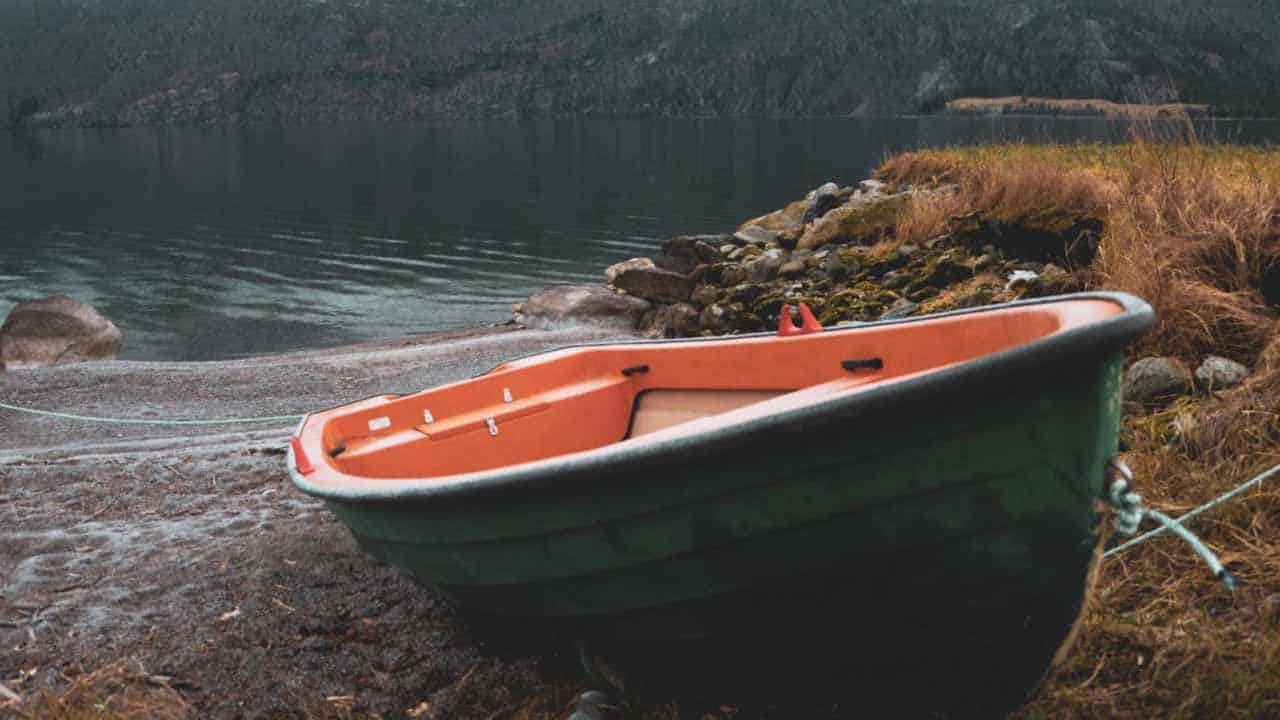
When it’s not in the water, the boat is on the harsh sand of the shore, or in the back of a trailer when it is being transported. It is the bottom part of the boat that suffers from the coarse nature of the sand, the salty and bacteria-infested nature of the water as well as the steel frame of a trailer.
Without a hard coat of paint, the bottom part of the boat will experience scratches, dents, cracks, and holes. Not to mention the activity of different organisms in the water like algae, barnacles, and bacteria.
All of which will hamper the speed and performance of the boat in the long run. If the frame starts to crack open, it will also become very difficult for the boat to stay afloat.
This is why the bottom part of the boat is usually painted so the durability of the boat can be improved.
What Factors Determine the Cost to Bottom Paint a Boat?
Painting the bottom frame of your boat will cost you some cash but the amount of cash you will spend depends on the following factors.
- The Size of the Boat – The bigger your boat, the more paint you will use and the time it will take to paint it. Extra gallons of paint equal extra cash and I’m sure you have heard of the cliché “Time is money.” For instance, it will cost you more to fully paint the bottom of a 35-foot boat than it would cost for an 18-foot boat.
- The Paint – You can’t use the normal latex or oil-based paint meant for walls to paint the bottom part of a boat. This is because these paints are not designed to be used in water. The paint needed for the bottom part of a boat needs to be able to cope well with the salty nature of the water and it must be able to resist the activity and growth of organisms that attach themselves to the boat. Antifouling paint is usually advised because the paint is specially designed for marine life.
- The Labor Used – Painting the bottom part of your boat by yourself will cost you less than hiring someone or contacting a boat-painting company to paint it for you.
- The Tools Needed – To paint the bottom of a boat, the boat needs to be elevated or suspended above ground level. You will also need additional tools and materials like sandpaper, scrappers, a primer, and the likes. All of which will spike the total cost eventually.
That being said, let’s check out how to calculate how much it will cost to paint a boat.
Related Read — Gravity-Feed Spray Guns Review
How Can You Calculate the Cost of Bottom-Painting Your Boat?
Painting the bottom part of your boat can be done in two ways. You can do it yourself or employ the services of a professional boat painting company. The cost to bottom paint your boat will depend primarily on the method you decide to use.
The Cost of Hiring a Professional Boat-painting Company
If you want to employ the services of a boat painting company, the estimate would be made known to you by the company. Usually, they will require you to provide the size dimension of your boat or take the measurements themselves.
The Cost of Painting the Boat Yourself
If you want to paint the bottom of the boat yourself, then you will need to do more than just provide the size dimension of the boat.
In addition to the size dimension of the boat, you will need to buy a few materials, rent a few tools, and depending on the size of the boat, you might need to hire an extra set of hands to help you out.
Regardless of the method, one similar need of both methods is the size dimension of your boat. The size dimension will determine the amount of time and paint you will use. So let’s check out how you can get the size dimension.
How to Measure the Size Dimension of a Boat?
The size dimension of your boat refers to the width, height, and length of the boat. To measure these, you will need:
- A tape rule
- A pencil and paper.
To get the size dimension of your boat, use a tape rule to take the measurements and write them down on a piece of paper.

Be mindful of the curves and corners of the boat while you take the measurement. The best way would be to measure along the curves to get an accurate measurement especially for the height of the boat.
For the width, measure the length of the widest part of the boat. The widest part is usually around the middle of the boat.
For the length, measure the distance from one end of the boat to the other and write down the measurements.
To be sure you have the accurate size dimension, you can search for the size dimension of the model (the type of boat) you have online and crosscheck what you see online with what you measured.
Let’s check out other factors that will determine the total cost to bottom paint a boat aside from the size dimension.
Related Read — Best Low-Pressure Spray Guns
The Cost of the Tools Needed to Bottom Paint a Boat
If you want to bottom paint the boat by yourself, asides from the size dimension, you need to get a list of the tools you will need to successfully bottom paint your boat.
If you want to hire a professional boat painting company, then you don’t need to worry about the tools because the total cost will be made known to you.
However, if this is a DIY task for you, then the cost of the tools and materials you need will affect the total estimate.
To bottom paint a boat by yourself, you will need:
- For the hull of a boat, you will need to buy coarse sandpaper.
- A paintbrush, roller, or paint sprayer
- Paint trays
- A pair of work gloves, safety goggles, and a respiratory mask
- A scrapper to get rid of barnacles and other attachments to the bottom of the boat
- Masking tape and drop cloths
The Cost of the Paint
The cost of the paint for the hull of a boat is usually more costly than the cost of your regular latex, acrylic, or oil-based paint.
This is because the paint used for the bottom of a boat has to be moisture resistant, able to withstand a lot of friction, and has to be capable of curbing the growth of organisms on the boat. Usually, antifouling paint is recommended for the hull of a boat. The paint is specifically designed for the outer layer of boats so it will work well underwater.
Other paint types include ablative paint which is designed to wear off slowly, Hard-bottom paint which is best for speed boats, and Polyurethane paints.
Regardless of the type of paint you go for, expect to spend more than you would ordinarily spend on a bucket of latex paint for walls.
Hull paints are usually sold in one-gallon containers and the price can range from as low as $30 to over $200 per gallon. The price will depend on the paint you decide to get.
It’s advised to go for quality in this case as bad paint will ultimately expose the frame of the boat to damages and aquatic organisms. The size of your boat will also determine how many gallons of paint you will need and the number of coats required.
Related Read — How to Strip Paint Off Concrete?
Below is an estimate of the gallons needed according to the size of the boat.
- For boats that are between 18 – 35 feet, a single coat of paint will require one 1½ gallon of paint while a double coat of paint will require 3 gallons of paint.
- For boats that are between 36 – 51 feet, a single coat of paint will need about 3½ gallons of paint while a double coat will require about 6 gallons of paint.
- For boats that are between 52 – 63 feet, a single coat of paint will need about 4½ gallons of paint while a double coat will require about 9 gallons of paint.
The bigger the boat, the more gallons of paint needed.
The Cost of Prepping and Repairing the Bottom Part of Your Boat
When attempting to bottom paint your boat, you will notice dents, cracks, and other damages to the hull of your boat. These damages would need repairs so the new paint can stick to the surface properly and so that the water wouldn’t affect the paint when sailing.
You will also need to prep the hull before painting. This will require you to scrape the barnacles and bumps off the bottom of the paint.
This can take hours depending on how hard the barnacles are. You will also need to prime the hull to increase its adhesiveness.
The cost of repairing and preparing the bottom part of the boat can be as high as $500 depending on the size of the boat and the extent of the damage.
It can even cost more than that if you have to replace a damaged part of the boat’s hull. Of course, this is for when you want to do it yourself.
Hiring a professional boat painting company will cost more. These companies charge per linear foot of the boat and the price will cost between $30 to over $120 depending on the size of the boat.
That’s just the price for painting. Boats that need additional repairs will cost more than that. For boat painting companies, there is also an additional cost for storing and transporting the boat before and after painting.
Of course, these prices will also vary based on your location and the type of paint job you want. For instance, premium hull painting will cost more than basic hull painting.
Related Read — How to Avoid Painting Mistakes?
How to Calculate the Estimate to Bottom Paint a Boat?
The estimate for bottom painting your boat will depend on if you decide to DIY or hire a boat painting company.
If it’s a company, then the overall cost will be made known. The challenge is when you want to do the task yourself. You will need to do a lot of calculations for this.
For instance, let’s calculate the estimated cost of painting a 30-foot boat by yourself.
Let’s assume,
- You buy two gallons of antifouling paint for $70 each. That will cost you $140.
- You buy a can of primer for about $20 since priming is advisable to increase adhesiveness.
- You will need to prep the bottom of the paint which will require you to scrape bumps and barnacles. Then sand repeatedly using sandpaper. To scrape off barnacles, you will need a metallic putty knife or spatula and sandpaper to sand. The cost of buying these can be up to $50.
- You might need to transport your boat from one location to the other and also rent tools that will help you elevate the boat so you can work underneath. Both will cost you well over $100 depending on your location.
That’s already a total price of over $300 and that’s without calculating the cost to repair damages, hire help, and store the boat if needed.
When you put the following into account, the total price can spike up to $500 and for a boat painting company, the final cost can be up to $1000. While painting the hull of a boat, do not spare any expense as this isn’t a task you would want to sacrifice quality for cost.
Related Read — How to Paint in Cold Weather?
Should You Bottom Paint a Boat Yourself or Hire a Professional?
While I will advise you to paint walls , floors, and other objects by yourself, I wouldn’t advise you to paint the bottom part of your boat by yourself. This is because so much can go wrong if you are inexperienced not least the risk of suffering life-threatening injuries if the boat isn’t firmly elevated. If it’s your first time, you should hire a professional for the sake of safety and efficiency.
Inadequate experience with this type of task and the absence of the required tools and materials will result in a bad paint job and possible injuries.
So I would advise you to hire a professional or a boat-painting company. If you would like to have hands-on experience with painting the bottom part of your boat, then you can hire a professional to assist you.
That way you will gain some valuable experience and know-how to embark on such projects the next time you want to paint the bottom part of your boat.
If you have any questions or comments about bottom-painting your boat, you can leave them below and I will attend to them as soon as possible. Have a nice day.
Related Read — How Much Does it Cost to Paint Your Wheels?
Amazon and the Amazon logo are trademarks of Amazon.com, Inc, or its affiliates.

We’re a team of engineers, contractors, technicians, and woodworking experts who use power tools daily and share fact-based information, tips, and recommendations. At thetoolgeeks.com, we debunk myths about power tools and share methods to use them effectively.
The Tool Geeks Team
We're a team of engineers, contractors, technicians, and woodworking experts who use power tools daily and share fact-based information, tips, and recommendations. At thetoolgeeks.com, we debunk myths about power tools and share methods to use them effectively.
Leave a Reply Cancel reply
Your email address will not be published. Required fields are marked *
This site uses Akismet to reduce spam. Learn how your comment data is processed .
How Much Does It Cost to Paint a Boat? (Price Chart)
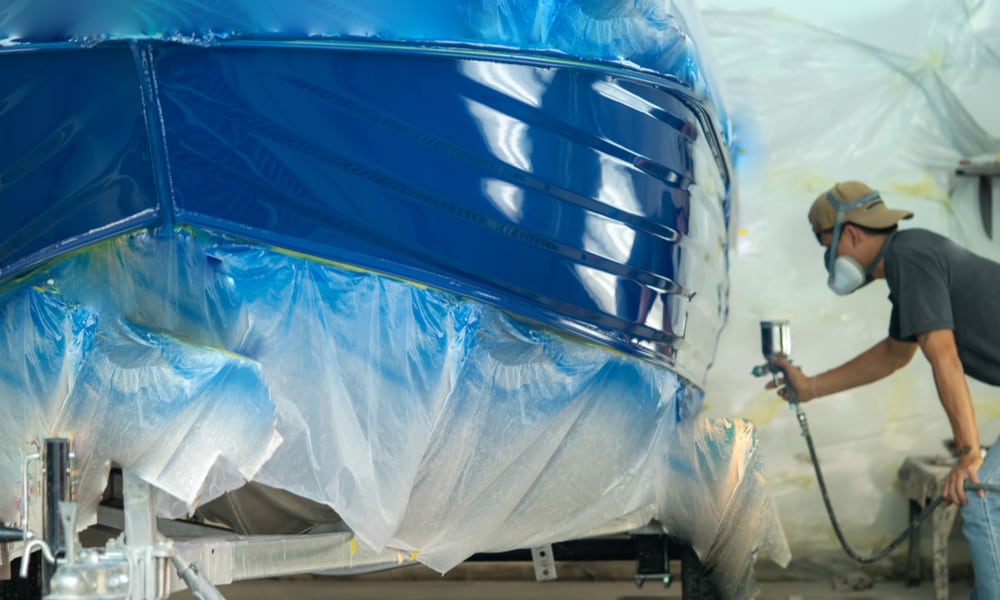
One of the most vital questions boat owners have is how much does it cost to paint a boat. It depends on numerous factors and can be $2 to even $400 per linear foot. So, painting may cost you a couple of hundred dollars to at least $5,000.
As you can see, the gap between those two values is vast, so you should check all relevant factors before starting with work. The first thing to decide is hiring a professional or organizing a DIY project. Then, overall costs will vary depending on the paint type and boat size. Let’s take a look.
Table of Contents
Why Should You Paint Your Boat?
Boat painting costs by types, what does affect the boat painting cost.
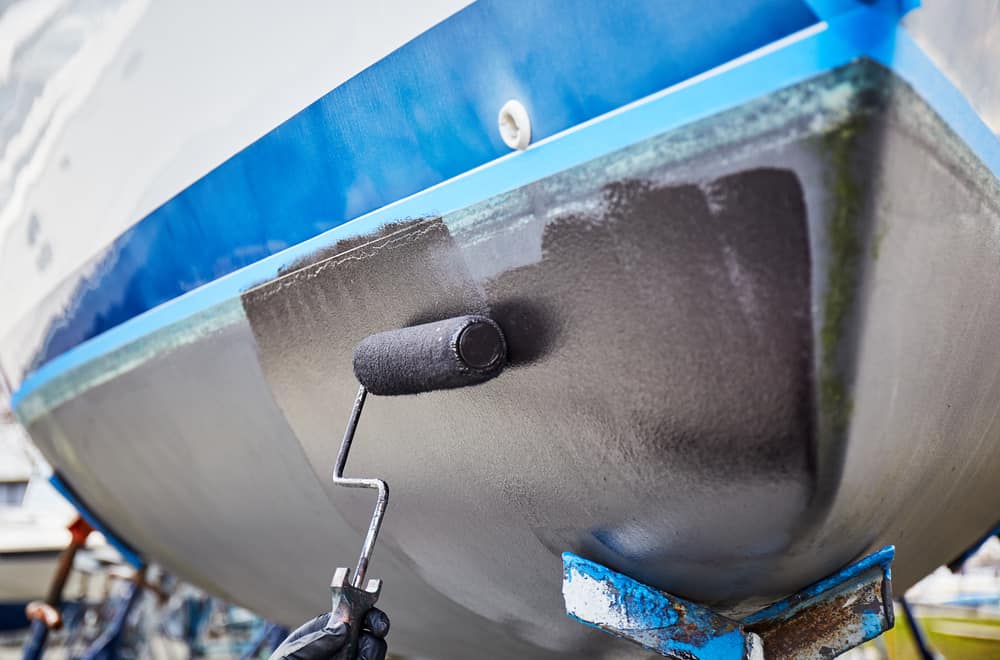
Whether you have a boat made of fiberglass , wood, or aluminum, its painting is highly beneficial and can prolong its life. It will also increase the vessel value, which is crucial if you plan to sell it in the future.
Plus, specialized paint will protect it from water damage and prevent water plants from sticking. Be prepared that this action is not easy and requires excellent preparation and a lot of hard work. It is estimated that about 75% of the process is preparation work if you want to get the desired boat look.
Before starting, you should determine if you need to paint the whole boat or only its parts. That will directly affect the amount of work and price.
Bottom (antifouling) painting
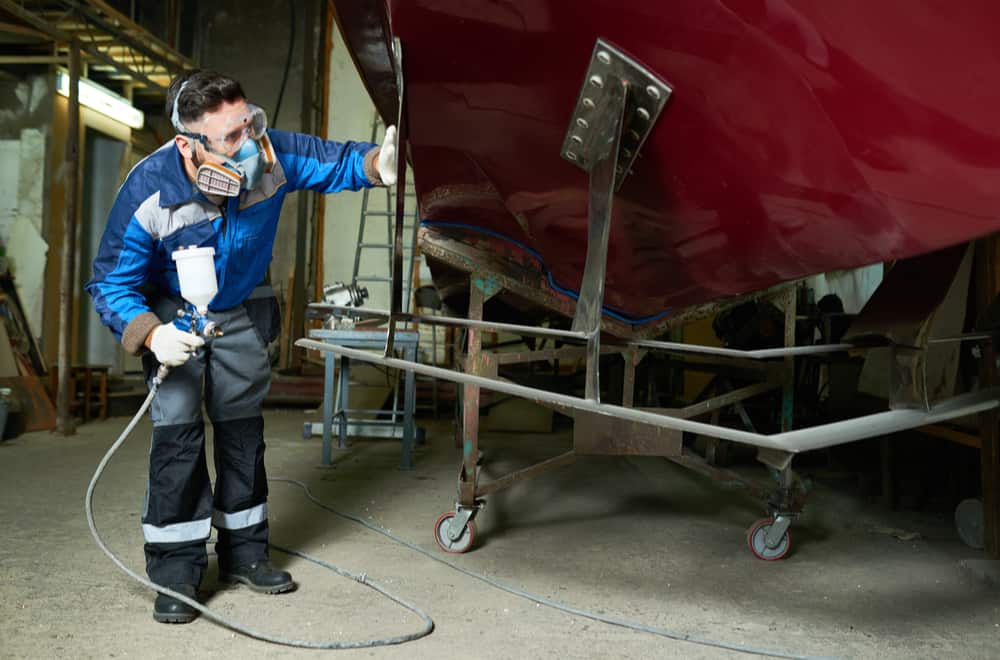
This painting type includes painting the vessel part below the water level. Most owners who use their boat regularly consider it unnecessary, but it is beneficial for vessels kept mainly on the dock.
Its primary purpose is to protect the hull from damage caused by barnacles and weeds. Remember that it is often unnecessary, but once you paint the boat bottom, it is necessary to regularly clean and re-paint it.
The first thing to do is to pick out the appropriate paint:
Ablative bottom paint – This self-polishing paint is an excellent option for slow-moving boats. It gradually wears away and releases biocides while sailing, making future re-painting effortless.
Hard bottom paint – This durable hard coating is an option for powerboats and other fast boats. The downside is that you need to remove it before re-painting your vessel.
Hybrid (semi-hard ablative) paint – This paint type is suitable for most boats and provides a smooth and hard surface resistant to buildup.
Besides the paint type, overall costs for professional bottom painting will depend on:
- Boat condition
- Way of keeping (in the water, a yard, or on a trailer )
If you decide on a DYI project, you will spend approximately $100 to $500 to complete painting your boat bottom.
Professional service implies the price of $15 to $100 per linear foot, but the average cost is about $20 to $45 per linear foot. That means you should set aside $300 to $800 for an average boat of 20 feet (6 m).
However, that number can reach $2,000, sometimes even $5,000, depending on the boat size, the company you choose, paint quality, and possible bottom damage.
Topside painting
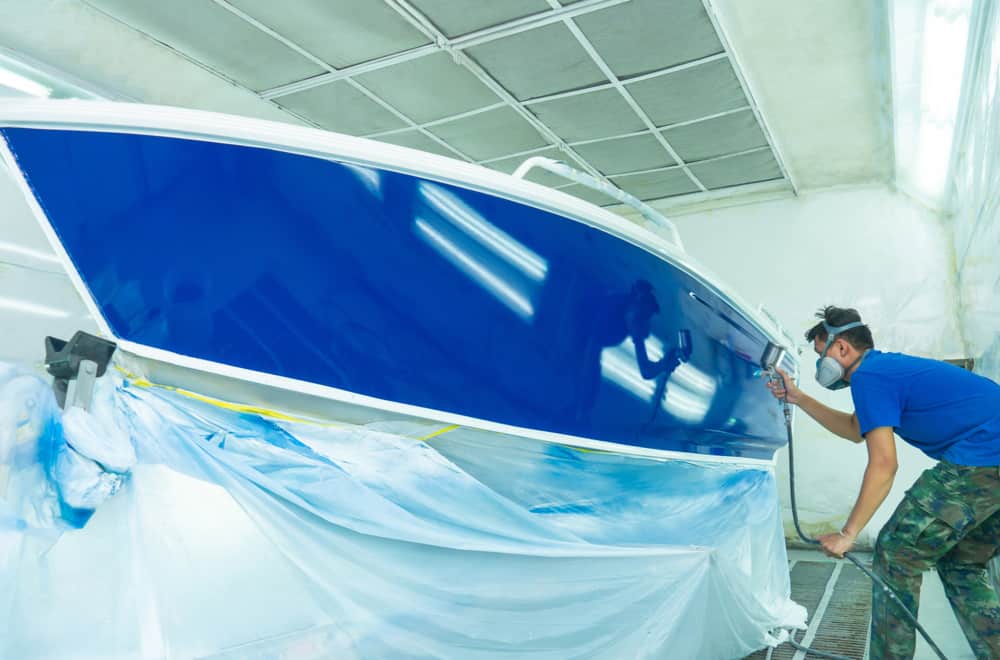
Topside painting has an aesthetic purpose and will protect the boat from water and sunlight exposure. The process includes boat body re-pairs, surface preparation, and primer application.
Before starting, you should determine if you need to paint the whole boat or only its parts, including:
- The interior
That will directly affect the amount of work and price. Remember that painting the boat topside requires a different procedure and paint type than bottom painting.
Overall topside boat painting costs can significantly vary, depending on:
You can choose among three topside paint types:
Alkyd enamel – This oil-based, low gloss paint is easy-to-apply and cheap but has poor color retention and low gloss.
One-part polyurethane – This popular, cheap, and easy-to-apply option is perfect for DIY topside painting.
Two-part polyurethane – This hard, durable, and expensive high-gloss topside paint type is tricky to apply, so it is better to hire a professional to work with it.
Additionally, you should pay more for a sizable boat and plan more money if your vessel is damaged.
The average DIY topside painting price is approximately $350. In this case, you should calculate paint price and add costs for prep materials, like:
- Paintbrush and paint trays
- Masking tape and sandpaper
The professional topside painting will cost you $100 to $400 per linear foot. However, the average price is often $200 to $250 per linear foot for an undamaged boat, particularly when choosing low-quality paint.
For instance, you need to set aside $4,000 to $5,000 for an average 20 feet (6 m) long vessel on average. However, the price range is from $2,000 to $8,000.
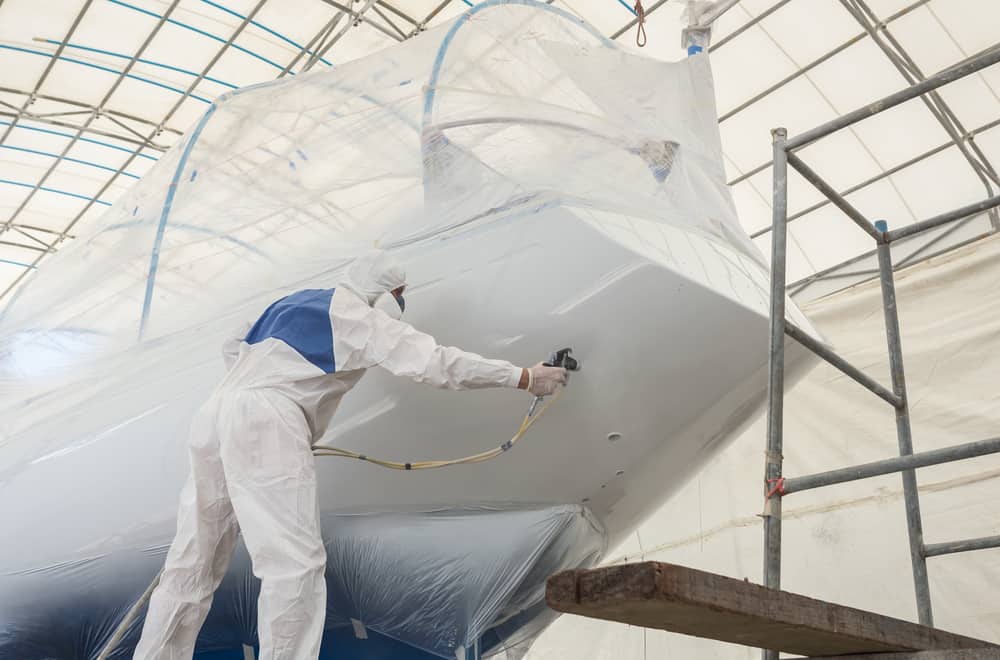
Bids you get for painting your boat can significantly vary, but you always need to pay for the same things:
Since different boat parts require specific paints, their price will vary from $100 to $300 per 1 gallon (3.8 l). So, you will get an approximate price after estimating your boat length and how much paint you need per 1 foot (0.3 m).
Remember that most modified epoxy hull paints quire only one coat, but you should calculate two coats when using ablative hull paints. Most hull paints will cost you $20 to $200 per gallon, but the final price will depend on the paint brand and painting style you choose.
Professional hull painting price primarily depends on your boat size and is typical $25 to $125 per linear foot. Remember that this price can be higher when your vessel requires additional re-pairing and more work, while a first painting of the new boat will be charged lower.
As you can expect, boat size will directly affect overall costs. However, professionals sometimes charge a higher rate per linear foot for small boats over bigger ones. The price will also depend on the place where you plan a painting. It is always more pricey when transportation is necessary.
Remember that marina quotes typically include all charges, except when later found problems require extra work. Plus, most professionals will quote for painting based on estimated rather than exact hours necessary to finish the job. They will let you know if some unexpected costs appear.
Consumables
You should also pay for some tools and supplies, such as:
- Rubber gloves, goggles, and protective masks
- Tyvek suits
- Paint stirrers
Always check whether the bill includes those things to prevent unpleasant surprises that count hundreds of dollars. Also, you will pay for everything bought, not only for what they have used.
For instance, you need to pay for an entire masking tape roll, although only a small piece has been used.
Extra costs
Paint stripping – As I have already mentioned, some paints will require stripping before applying a new paint layer, so you need to pay for this work. However, it will make it easier to notice any existing damage and allow better prime.
Customization – Simply said, you need to pay extra if you prefer to give your boat a unique and distinctive look. It is possible to add an application, your initials, or the company logo on the hull.
Professionals typically calculate this service cost by linear feet, so you should count on $100 and $400 for the customizing topside painting and approximately $15 to $100 for the bottom painting.
Insurance and disposal and environmental charges
Professionals will invariably include insurance costs in the final bill. Plus, many states charge environmental charges and marina fees because of paint’s inherent toxicity. So, you should also pay for that, regardless of whether it is a flat fee or a bill percentage. Finally, you need to add disposal charges to overall costs.
Sailing exposes your boat to numerous outdoor elements, making protective painting crucial for prolonging its life. Plus, a freshly coated boat will look more representative, and its price will be higher once you decide to sell it.
The planned budget will depend on the boat size, paint type, and the way of finishing that task. The DIY project will be more affordable, but hiring professionals often means a more appealing boat look.
Related posts:
- How to Obtain a Motor Boat License? (Unlimited Guides)
- 31 Different Types Of Boats
- Freshwater Vs. Saltwater Boating: What’s the Difference?
- What Does A Ship Captain Do?
Leave a Comment Cancel reply
Save my name, email, and website in this browser for the next time I comment.

How Much Does It Cost to Paint a Boat? A Comprehensive Guide to Boat Painting Costs
Painting a boat is an essential part of boat maintenance that helps to protect it from the harsh marine environment. However, the cost of painting a boat can vary depending on several factors, including the size of the boat, the quality of the paint, and whether you hire a professional or do it yourself.
According to recent estimates, the cost to paint a boat can range from a few hundred dollars to several thousand dollars. A top-to-bottom guide on Best Boat Report suggests that painting a boat may cost between $400 and $10,000, depending on the size of the boat, the quality of the paint, and whether you hire a professional or go the DIY route . Other factors such as hauling and storage fees may also affect this cost.
If you’re considering painting your boat, it’s essential to understand the factors that affect the cost and how to get the best value for your money. This article will explore the cost of painting a boat in more detail and provide tips on how to save money while getting a quality paint job.

Understanding the Basics of Boat Painting
Painting a boat is an essential part of boat maintenance that helps to protect the vessel from the harsh marine environment. It also enhances the boat’s appearance, making it look new and attractive. However, the cost of painting a boat can vary significantly depending on several factors, including the size of the boat, the type of paint used, and whether a professional painter is hired or not.
Types of Boat Painting
There are two types of boat painting: topside painting and bottom painting. Topside painting refers to painting the exterior of the boat above the waterline, including the hull, deck, and superstructure. Bottom painting, on the other hand, involves painting the underwater part of the boat below the waterline, including the hull and keel.
Factors that Affect the Cost of Boat Painting
Several factors can affect the cost of painting a boat, including:
- Boat size: The larger the boat, the more paint and labor are required, which increases the cost of painting.
- Type of paint: High-quality marine paints are more expensive than standard paints, but they offer better protection against the marine environment.
- Professional vs. DIY: Hiring a professional to paint the boat will cost more than doing it yourself, but it ensures a high-quality finish and saves time and effort.
Cost of Boat Painting
The cost of painting a boat can vary widely depending on the factors mentioned above. According to Best Boat Report , the cost of painting a boat can range from $400 to $10,000 or more. This cost includes the cost of paint, labor, and other expenses such as hauling and storage fees.
Boat owners who choose to paint their boats themselves can save money on labor costs but should be prepared to invest time and effort into the project. According to Pro Paint Corner , the average cost of painting the bottom of a boat ranges from $300 to $2,000, depending on the quality of the paint and the size of the boat.
In conclusion, painting a boat is an essential part of boat maintenance that helps to protect the vessel and enhance its appearance. The cost of painting a boat can vary widely depending on several factors, including the size of the boat, the type of paint used, and whether a professional painter is hired or not. Boat owners should carefully consider these factors before embarking on a boat painting project.
Determining the Cost to Paint a Boat
Determining the cost to paint a boat can be a challenging task as it depends on various factors. The size of the boat, the quality of the paint, and whether you hire professionals or do it yourself are some of the key factors that can affect the cost.
According to Best Boat Report , painting a boat may cost anywhere between $400 and $10,000. The cost varies depending on the size of the boat, the type of paint used, and the labor cost.
The cost of painting a boat also depends on the type of painting required. For instance, painting the bottom of the boat costs more than painting the topside. The average cost of painting the bottom of a boat ranges from $300 to $2000, depending on the quality of the paint and the size of the boat. The quality of the paint used for the bottom is essential to withstand saltwater and other elements.
Another factor that can affect the cost of painting a boat is whether you hire professionals or do it yourself. Hiring professionals can be expensive, but it ensures that the job is done correctly. On the other hand, painting the boat yourself can be cost-effective, but it requires a lot of time and effort.
It is essential to get quotes from multiple companies before deciding on a particular one. This will help you compare prices and choose the one that fits your budget. Additionally, it is crucial to factor in the cost of hauling and storage fees when determining the overall cost of painting a boat.
In conclusion, determining the cost to paint a boat depends on various factors such as the size of the boat, type of paint, and whether you hire professionals or do it yourself. It is essential to get multiple quotes and factor in additional costs such as hauling and storage fees to determine the overall cost.
Factors Influencing the Cost of Boat Painting
The cost of painting a boat can vary depending on several factors. Here are some of the factors that can influence the cost of boat painting:
Boat Size and Condition
The size and condition of the boat are significant factors that can determine the cost of painting. Larger boats will generally require more paint, more labor, and more time, which can increase the cost. Additionally, if the boat is in poor condition, it may require more preparation work, such as sanding and filling, which can also increase the cost of painting.
Different types of boats require different types of paint and preparation work. For example, fiberglass boats require a different type of paint than aluminum boats . Sailboats may require more detailed painting work than powerboats, which can also affect the cost.
Quality of Paint
The quality of paint used can also affect the cost of boat painting. Higher quality paint may cost more, but it can also last longer and provide better protection against the elements. Cheaper paint may require more frequent repainting, which can add to the overall cost in the long run.
Different types of paint can also affect the cost of boat painting. Two-part polyurethane paint is a popular choice for boat painting, but it can be more expensive than other types of paint. However, it can also provide better protection and a more durable finish.
Environmental Charges and Disposal Charges
Environmental charges and disposal charges can also affect the cost of boat painting. Some boatyards may charge extra fees for environmental disposal of paint and other materials. It’s essential to find out about these fees before starting the painting process to avoid any surprises.
Overall, the cost of painting a boat can vary significantly depending on several factors. It’s essential to consider all of these factors before starting the painting process to get an accurate estimate of the cost.
Materials and Supplies Required
Painting a boat requires several materials and supplies, including sandpaper, masking tape, primer, paintbrushes, spray guns, paint trays, prep materials, a tape measure, and respirators. The cost of these materials and supplies varies depending on the boat’s size and the quality of the materials.
Sandpaper is essential for preparing the boat’s surface for painting. It is used to remove old paint, rust, and other debris from the boat’s surface. The cost of sandpaper depends on its grit size and the number of sheets needed to complete the job. A pack of sandpaper sheets can cost between $10 and $30.
Masking Tape
Masking tape is used to protect areas of the boat that should not be painted. It is also used to create clean lines between different colors. The cost of masking tape depends on its width and the length needed. A roll of masking tape can cost between $5 and $20.
Primer is applied to the boat’s surface to help the paint adhere better. It also helps to prevent rust and corrosion. The cost of primer depends on the type and quality of the product. A gallon of primer can cost between $30 and $100.
Paintbrushes and Spray Guns
Paintbrushes and spray guns are used to apply the paint to the boat’s surface. The cost of paintbrushes and spray guns depends on the quality of the product. A set of paintbrushes can cost between $10 and $50, while a spray gun can cost between $50 and $200.
Paint Trays
Paint trays are used to hold the paint while it is being applied to the boat’s surface. The cost of paint trays depends on the quality of the product. A pack of paint trays can cost between $5 and $20.
Prep Materials
Prep materials are used to prepare the boat’s surface for painting. These materials include cleaning solutions, degreasers, and rust removers. The cost of prep materials depends on the type and quality of the product. A gallon of cleaning solution can cost between $10 and $30.
Tape Measure
A tape measure is used to measure the boat’s length and width to determine the amount of paint needed. The cost of a tape measure depends on its length and the quality of the product. A tape measure can cost between $5 and $30.
A respirator is used to protect the painter from inhaling harmful fumes and particles. The cost of a respirator depends on the type and quality of the product. A respirator can cost between $20 and $100.
Overall, the cost of materials and supplies for painting a boat can range from a few hundred dollars to several thousand dollars, depending on the boat’s size and the quality of the materials used. It is important to use high-quality materials and supplies to ensure a long-lasting paint job.
Types of Boat Paint
When it comes to boat painting, choosing the right type of paint is crucial. There are various types of boat paint available in the market, each with its own advantages and disadvantages. Here are some of the most common types of boat paint:
Bottom Paint
Bottom paint is designed for use on the bottom of a boat to prevent the growth of marine organisms such as barnacles, algae, and mollusks. There are two main types of bottom paint: hard bottom paint and ablative bottom paint. Hard bottom paint is a durable and long-lasting paint that creates a hard, smooth surface. Ablative bottom paint is a self-polishing paint that gradually wears away over time, releasing biocides to prevent marine growth.
Antifouling Paint
Antifouling paint is a type of bottom paint that contains biocides to prevent the growth of marine organisms. It is available in both hard and ablative formulations and is effective in preventing the growth of barnacles, algae , and other marine organisms.
Polyurethane Paint
Polyurethane paint is a popular choice for boat painting due to its durability, resistance to fading and chalking, and ease of application. There are two main types of polyurethane paint: one-part polyurethane and two-part polyurethane. One-part polyurethane is easier to apply, but not as durable as two-part polyurethane.
Alkyd Enamel
Alkyd enamel is a type of paint that is often used for painting the topsides of boats. It is a durable and long-lasting paint that provides a high-gloss finish. However, it can take longer to dry and is not as resistant to fading and chalking as polyurethane paint.
Hybrid Paint
Hybrid paint is a combination of two different types of paint, such as polyurethane and alkyd enamel. This type of paint is designed to provide the best of both worlds, combining the durability and resistance of polyurethane with the high-gloss finish of alkyd enamel.
In conclusion, choosing the right type of boat paint is essential for achieving a long-lasting and high-quality finish. It is important to consider factors such as durability, resistance to fading and chalking, ease of application, and prevention of marine growth when selecting the appropriate paint. Here is more information on marine paints for boats .
The Boat Painting Process
Painting a boat is a time-consuming process that requires proper preparation and execution. The following paragraphs outline the steps involved in painting a boat and the factors that affect the cost.
Before painting, the boat must be thoroughly cleaned and sanded to remove any dirt, grime, or old paint. This step is crucial as any leftover debris can affect the adhesion of the new paint. Additionally, any areas with cracks or holes must be filled and sanded to ensure a smooth surface.
If the boat has old paint, it must be removed before applying new paint. This is done by either sanding or using a chemical stripper. Sanding is the most common method, but it is time-consuming and requires a lot of effort. Chemical strippers are faster, but they can be expensive and pose a risk to the environment.
Primer Application
Once the boat is clean and smooth, a primer must be applied. The primer helps the paint adhere to the boat and provides an extra layer of protection against the elements. The type of primer used depends on the type of paint being used and the material of the boat.
Topside Painting
Topside painting refers to painting the upper part of the boat, including the deck, cabin, and superstructure. This is usually done with a two-part polyurethane paint, which is durable and resistant to fading. The cost of topside painting depends on the size of the boat, the quality of the paint, and whether a professional is hired.
Hull Painting
Hull painting refers to painting the bottom of the boat. This is done with a specialized paint that is designed to withstand saltwater and other elements. The cost of hull painting depends on the size of the boat, the quality of the paint, and whether a professional is hired. It is also important to note that the old paint must be removed before applying new paint, which can add to the cost.
Paint Quality
The quality of the paint used affects the cost and the longevity of the paint job. High-quality paints are more expensive, but they last longer and provide better protection against the elements. Cheaper paints may save money in the short term, but they may need to be repainted sooner, which can end up costing more in the long run.
Paint Application
The method of paint application affects the cost and the quality of the paint job. Brush and roller application is the most common method, but it can be time-consuming and may leave brush marks. Spray application is faster and provides a smoother finish, but it requires more skill and can be messy. The method of paint application depends on the type of paint being used and the size of the boat.
In conclusion, painting a boat requires proper preparation and execution. The cost of painting a boat depends on various factors, including the size of the boat, the quality of the paint, and whether a professional is hired. It is important to choose high-quality paint and to use the proper method of paint application to ensure a long-lasting and durable paint job. Follow the link for more information on removing old paint from a fiberglass boat .
Cost Analysis Based on Boat Size and Type
The cost of painting a boat depends on various factors such as the boat size, type, quality of paint, and whether the owner chooses to hire a professional or do it themselves. Here is a breakdown of the cost analysis based on boat size and type:
Small Boats
Small boats such as dinghies , kayaks, and canoes typically cost less to paint than larger boats. The cost of painting a small boat can range from $400 to $1,000. However, the cost may vary depending on the quality of the paint and whether the owner chooses to do it themselves or hire a professional.
Medium Boats
Medium-sized boats such as runabouts, center consoles, and cuddy cabins may cost between $1,000 and $3,000 to paint. The cost may vary depending on the boat’s length, width, and height. For example, a 20-foot boat may cost around $2,000 to paint, while a 30-foot boat may cost around $3,000.
Large Boats
Large boats such as sailboats, yachts, and motor cruisers may cost between $3,000 and $10,000 to paint. The cost may vary depending on the boat’s length, square footage, and height. For example, a 40-foot sailboat may cost around $5,000 to paint, while a 60-foot motor cruiser may cost around $10,000.
Cost per Linear Foot
Some boat painting companies may charge by the linear foot, which is the measurement of the boat’s length. The cost per linear foot may range from $2 to $400. The cost may vary depending on the boat’s type, size, and whether the owner chooses to paint the topside or bottom.
Cost per Square Foot
Some boat painting companies may charge by the square foot, which is the measurement of the boat’s surface area. The cost per square foot may range from $10 to $25. The cost may vary depending on the boat’s type, size, and whether the owner chooses to paint the topside or bottom.
Overall, the cost of painting a boat can vary significantly depending on various factors. It is essential to consider all relevant factors before starting the painting process to avoid any unexpected costs.
Special Considerations for Different Boat Materials
When it comes to painting a boat, the material of the boat plays a significant role in determining the cost and the type of paint that should be used. Here are some special considerations for different boat materials:
Fiberglass boats are the most common type of boats, and they require special care when it comes to painting. The gel coat on fiberglass boats tends to wear out over time, which can lead to cracks and other forms of damage. Before painting a fiberglass boat, it is essential to repair any damage to the gel coat. This can be done by sanding the damaged area and applying a new gel coat layer. After the gel coat is repaired, the boat can be painted. It is recommended to use a marine-grade paint that is specifically designed for fiberglass boats.
Aluminum boats are lightweight and durable, making them a popular choice for boaters. However, painting an aluminum boat requires special considerations. The surface of the aluminum must be cleaned and prepped before painting to ensure that the paint adheres properly. It is also important to use a paint that is specifically designed for aluminum boats to prevent corrosion.
Wooden boats require special care when it comes to painting. The wood must be sanded and prepped before painting to ensure that the paint adheres properly. It is recommended to use a marine-grade paint that is specifically designed for wooden boats. Additionally, it is important to ensure that the boat is properly sealed to prevent water damage.
Gel coat is a protective layer that is applied to fiberglass boats. Over time, the gel coat can become damaged, which can lead to cracks and other forms of damage. Before painting a boat with damaged gel coat, it is important to repair any damage. This can be done by sanding the damaged area and applying a new gel coat layer. After the gel coat is repaired, the boat can be painted. Click the link for more information on repairing gel coat damage on a boat .
In conclusion, when it comes to painting a boat, the material of the boat plays a significant role in determining the cost and the type of paint that should be used. It is important to take special considerations for different boat materials to ensure that the paint job is done correctly and lasts for a long time.
DIY Boat Painting Vs. Hiring a Professional
When it comes to boat painting, there are two options: DIY painting or hiring a professional. Each option has its pros and cons, and it’s up to the boat owner to decide which one is the best fit for their needs.
DIY Painting
DIY boat painting is a popular option for boat owners who want to save money. The cost of paint and supplies can range from $400 to $1,000, depending on the size of the boat and the quality of the paint. If the boat owner has experience with painting, they may be able to complete the project on their own. However, if they don’t have experience, it’s important to do research and follow instructions carefully to avoid mistakes.
One advantage of DIY boat painting is that the boat owner has complete control over the project. They can choose the paint color and type, and they can work on the project at their own pace. However, it’s important to keep in mind that DIY painting can be time-consuming and labor-intensive. The boat owner will need to set aside several days or even weeks to complete the project.
Hiring a Professional
Hiring a professional to paint a boat is the most expensive option, but it also has its advantages. A professional company like a body shop will cost anywhere from $1,000 to $5,000 or more, depending on the size of the boat. The advantage of hiring a professional is that the boat owner doesn’t have to do any of the work. The professional company will handle everything from preparing the boat for painting to applying the final coat.
Another advantage of hiring a professional is that the boat owner can be sure that the job will be done correctly. A professional painter has the experience and expertise to ensure that the paint job is smooth and even, and that the paint will last for years to come. Additionally, hiring a professional can save time, as the job can be completed in a matter of days rather than weeks.
When deciding whether to paint a boat themselves or hire a professional, boat owners should consider their budget, time constraints, and level of experience. It’s also important to get bids from several professional companies to ensure that the boat owner is getting a fair price for the job. Ultimately, the decision will depend on the boat owner’s individual needs and preferences.
Understanding the Impact of Environmental Factors
When it comes to painting a boat, there are several environmental factors that can impact the cost and longevity of the paint job. Understanding these factors can help boat owners make informed decisions about their painting needs.
Water Damage and Sunlight Exposure
Boats that are frequently exposed to water and sunlight are more likely to experience paint damage due to the harsh environmental conditions. Saltwater can be particularly damaging to paint, as it can cause corrosion and rust. If a boat is frequently in the water, it may require more frequent repainting to maintain its appearance.
Barnacles and Weeds
Barnacles and other marine life can attach themselves to a boat’s hull, causing damage to the paint and potentially affecting the boat’s performance. Boats that are frequently in the water are more likely to experience this type of damage, and may require more frequent repainting to prevent long-term damage.
On a Trailer
Boats that are stored on a trailer are less likely to experience environmental damage, as they are not exposed to water or sunlight on a regular basis. However, if the boat is frequently transported on the trailer, it may be more susceptible to damage from road debris and other hazards.
In Saltwater
Boats that are used in saltwater are more likely to experience corrosion and rust, which can damage the paint and affect the boat’s performance. Saltwater can also cause damage to the boat’s electrical systems and other components, which can increase the overall cost of maintenance.
Cost Considerations
When considering the impact of environmental factors on the cost of painting a boat, it is important to consider the long-term costs of maintenance and repair. While a high-quality paint job may be more expensive upfront, it can save boat owners money in the long run by reducing the need for frequent repainting and minimizing the risk of long-term damage.
Overall, understanding the impact of environmental factors on a boat’s paint job can help boat owners make informed decisions about their maintenance needs and budget accordingly.
Additional Costs for Customization and Special Requests
Customization and special requests can add to the overall cost of painting a boat. The cost of customization varies depending on the type of customization and the size of the boat. Here are some additional costs to consider:
Graphics and logos: Adding graphics and logos to the boat can make it stand out and add a personal touch. The cost of graphics and logos varies depending on the size and complexity of the design. Some companies charge by the hour, while others charge a flat fee. On average, the cost can range from $500 to $2,500.
Striping and accent colors: Striping and accent colors can enhance the appearance of the boat. The cost of striping and accent colors varies depending on the size and complexity of the design. Some companies charge by the hour, while others charge a flat fee. On average, the cost can range from $500 to $2,500.
Custom paint colors: Custom paint colors can give the boat a unique look. The cost of custom paint colors varies depending on the type of paint and the size of the boat. Some companies charge by the hour, while others charge a flat fee. On average, the cost can range from $1,000 to $5,000.
Special coatings: Special coatings can protect the boat from the elements and enhance its appearance. Some coatings can also improve the boat’s performance. The cost of special coatings varies depending on the type of coating and the size of the boat. On average, the cost can range from $1,000 to $5,000.
Interior painting: If the boat has an interior, it may need to be painted as well. The cost of interior painting varies depending on the size and complexity of the job. On average, the cost can range from $500 to $2,500.
It’s important to note that these are just estimates and the actual cost may vary depending on the specific customization and special request. It’s recommended to get a quote from a professional boat painter to get an accurate cost estimate.

Frequently Asked Questions
What is the average cost to paint a fiberglass boat.
The average cost to paint a fiberglass boat can range from $300 to $10,000, depending on various factors such as the size of the boat, the quality of the paint, and whether you hire a professional or opt for a DIY project. It is recommended to get quotes from multiple companies to find the best price.
How much should I expect to pay to paint a 17 ft boat?
The cost to paint a 17 ft boat can range from $400 to $2,000, depending on the quality of the paint and whether you hire a professional or do it yourself. It is important to properly prepare the surface before painting to ensure the best results.
What is the cost to paint a 21 foot boat?
The cost to paint a 21 foot boat can vary depending on several factors such as the type of paint used, the condition of the boat, and the amount of prep work required. On average, it can cost between $1,500 and $4,000 to paint a 21 foot boat.
How much does it cost to paint and gelcoat a boat?
Painting and gelcoating a boat can cost anywhere from $2,000 to $10,000 or more, depending on the size and condition of the boat. Gelcoating is a specialized process that involves applying a protective layer to the boat’s surface to prevent damage from water, UV rays, and other environmental factors.
What are the typical prices for boat bottom painting near me?
The cost of boat bottom painting can vary depending on the location, size of the boat, and the type of paint used. On average, it can cost between $10 and $25 per linear foot for DIY projects, while professional services can range between $20 and $100 per linear foot.
Can I paint over old paint on my boat?
It is possible to paint over old paint on a boat, but it is important to properly prepare the surface to ensure the new paint adheres properly. This may involve sanding down the old paint, removing any peeling or flaking areas, and applying a primer before painting. It is recommended to consult with a professional to determine the best course of action.
About the author
I worked as an officer in the deck department on various types of vessels, including oil and chemical tankers, LPG carriers, and even reefer and TSHD in the early years. Currently employed as Marine Surveyor carrying cargo, draft, bunker, and warranty survey.
Leave a Reply Cancel reply
Your email address will not be published. Required fields are marked *
Save my name, email, and website in this browser for the next time I comment.
Latest posts

What Does a Longshoreman Do?
Longshoremen play a critical role in the global supply chain, bringing billions worth of cargo into the country. So what does a longshoreman do exactly?
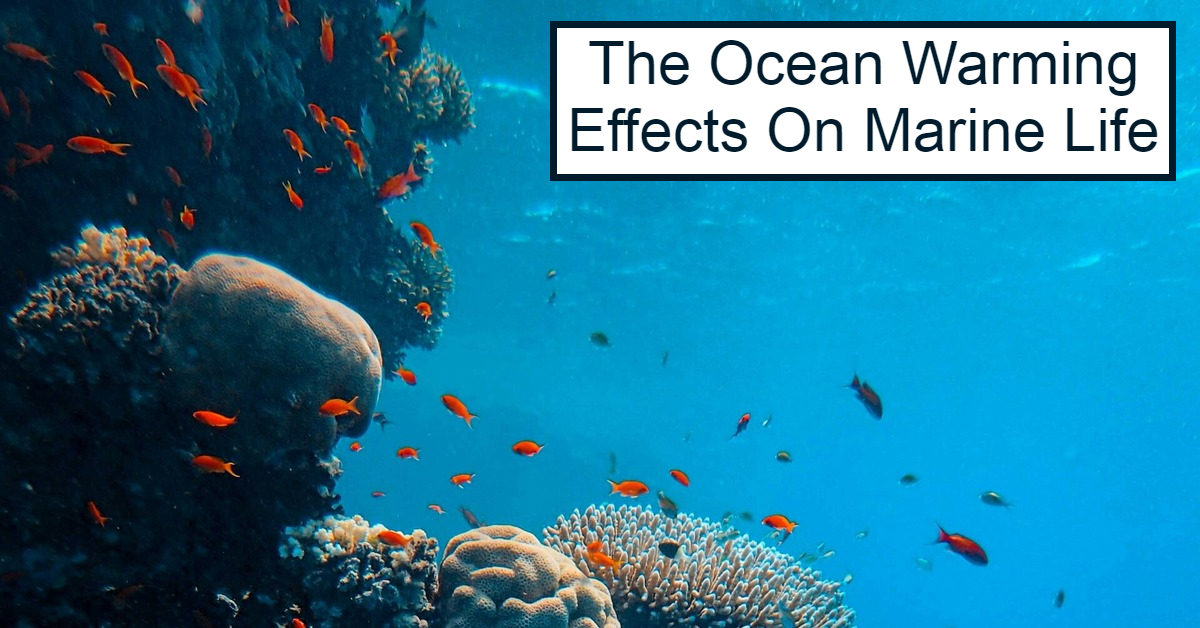
The Ocean Warming Effects on Marine Life
The last few decades have seen ocean temperatures rise as climate change begins to affect maritime industries worldwide. Here are the ocean warming effects on marine life seen so far.
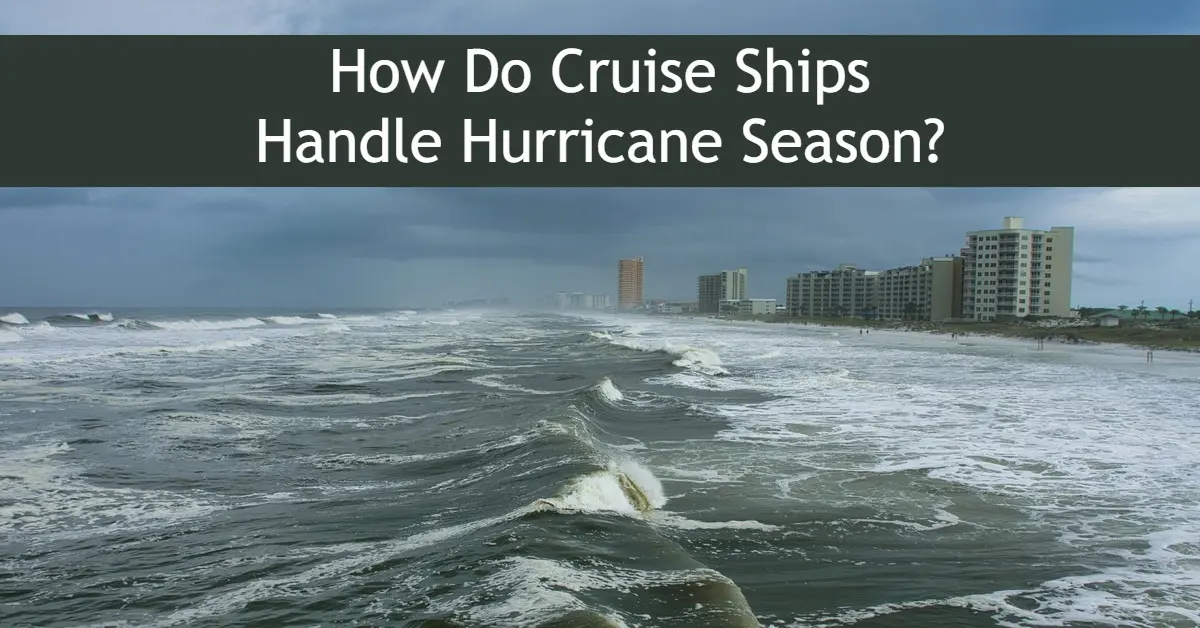
How Do Cruise Ships Handle Hurricane Season Cruises?
Thankfully, modern cruise ships can handle a hurricane season cruise. Due to past experiences and new advancements, crews prove these boats operate well no matter the weather.

Small boats with stained bottom require single pass.
$16.00/ft
Painting the Bottom of your boat with a high quality anti-fouling paint is one way to ensure that your boat doesn't get blisters on the bottom and to provide lasting protection.
Anti-fouling life depends on how often the vessel actually moves. stagnant boats collect more foul and will lose more anti-foul protection next time underway. .

Signs of marine growth, 2 Passes of acid
$28.00/ft
BOTTOM PAINTING Experience hassle-free bottom painting services at The Mobile Boat Guys. Whether you're hauling out or your boat is on a trailer, we've got you covered. We'll take care of all the arrangements and coordination with the boatyard, making the process seamless for you. With our expert team and efficient service, you can trust us to get the job done right. Don't wait any longer to protect your vessel and enhance its performance. Call us now for more information and to schedule your bottom painting service."

Excessive marine growth requiring 3-4 passes of acid.
$46.00/ft

Hardened marine growth requiring 5 or more passes of acid.
$64.00/ft
BOTTOM STRIPPING If the existing bottom paint is beginning to chip all over the bottom of the boat and looks beyond just a touch a couple of touch ups. It's an indication that it is time to strip the existing paint down to the bare bottom.
We are skilled at marine growth removal and abatement of the existing paint without causing any structural damage to your boat and damaging the gel-coat underneath the bottom of barrier coat. .

Sanding & grinding required to remove calcified growth.
$100.00/ft

Bottom paint prep for bottoms with existing paint.
7.50/ft
Barrier coating/applying a good primer is one way to increase your boats value and more importantly prevent the bottom from blistering. Barrier coat also gives the new anti-fouling paint a clean surface and something to adhere too, whether it's fiberglass or an aluminum boat you must apply a few coats of primer to ensure overall protection.
*Call for an consultation

New bottom prep for initial bottom paint application .
$21.00/ft

Bottom paint stripping.
$250.00/ft

Please verify you are a human
Access to this page has been denied because we believe you are using automation tools to browse the website.
This may happen as a result of the following:
- Javascript is disabled or blocked by an extension (ad blockers for example)
- Your browser does not support cookies
Please make sure that Javascript and cookies are enabled on your browser and that you are not blocking them from loading.
Reference ID: 2f7f9ac0-e6ff-11ee-ad38-7c98dad95d52
Powered by PerimeterX , Inc.

IMAGES
VIDEO
COMMENTS
What will you pay for this service? After researching a variety of bottom painting pros, here is a table of the costs you might expect to shell out for antifouling paint on your sailboat. Keep in mind that prices can vary, so we highly recommend calling or emailing the bottom painting servicer you found and asking about their prices directly.
Author: Elissa Huebert | Updated: May 12, 2022 | Affiliate links may be present. A boat is an investment but for water lovers, the payoff is well worth it! Bottom painting your boat is part of the investment to maintain your boat. What does bottom painting involve? And, exactly how much is it going to cost, anyway?
Bottom painting a small sailboat (20 feet or fewer) can cost anywhere from $500 to $1,500, depending on the state of the hull, the type of paint and primer used, and the location. It is important to note that a sailboat of this size is easy to handle, and the paint job can be done quickly. Medium sailboat (30-40 feet)
June 15, 2022 Sailboats are designed to be exposed to the harshest of elements - water. As such, there is much more to painting the hull that choosing a color and slapping it on. A quality hull painting job will take time and have a range of cost involved. Hull painting is more than simply decorative, it is also protective. Table of contents
Shop Rates Service Rates (effective March 1, 2023 can change without notice) Mechanical & Installations Labor Rate - $160.00 Per Hr Yard Labor Rate - $110.00 Per Hr Shop supplies fee (calculated on labor) - 2.8% max $225.00 EPA Fee (calculated on labor) - 7.0% max $400.00 Bottom Paint
The cost of bottom paint for a typical 20-30 foot boat can range from $500 to $1,500 for a DIY application with average-quality paint. Larger boats, in the 30-40 foot range, might cost between $1,500 and $3,000. However, these are rough estimates, and actual costs can vary based on factors like boat size, paint type, and labor expenses.
Painting the bottom of a moderate-sized boat in a yard will cost between $20 and $45 per foot. A 25-foot yacht will cost you around $800. A 40-foot yacht will cost you around $1,300. This cost ranges quite a lot because of many variables, but you can control some of those to rein in the costs. Below, I'll go over the different variables that ...
BOTTOM JOB IF WE HAD HIRED THE YARD TO DO IT: $1796, not including taxes and fees. OH MY GOD. Option 2: DIY. Cost-conscious cruisers tend to do a lot themselves. We are no exception. Our costs for this year's bottom job. Haul, block, launch: $277.50. Storage fee for a month: $125. Paint: 2@ $89.99.
On average, hiring a professional company to bottom paint your boat will cost between $1000 and $3000 or more. Again, it depends on the size of the boat. Doing it yourself:
Daniel Wade June 15, 2022 If you leave your boat without protection, it's beyond question that it will start attracting several marine organisms such as slime, algae, mussels, barnacle, and seaweed. This will cover the bottom of your sailboat and may negatively affect your boat's speed and fuel efficiency.
If you store your boat in the water at least part of the year, keeping the hull free of marine growth with one or more coats of quality antifouling paint is critical to keep it performing its best—and for reducing fuel costs. This preventative maintenance task should be at the top of your list.
Pricing for bottom paint stripping varies from $20/ft to $30+/ft. Some factors that will determine the cost are: size of boat, type of paint on the bottom, number of paint layers, numbers of chines and location of boat. Call SBS for a free quote! Barrier coating your boat bottom increases it's value, fights blistering and greatly aids
Painting your boat may cost you between $400 and may go as high as $10,000. This may vary depending on factors such as the boat size, the quality of the paint, and whether you hire a professional or go the DIY route. Other factors such as hauling and storage fees may also affect this cost.
Updated Price How Much Does It Cost to Paint a Boat? Updated Price October 1, 2023 Written by J. Harvey / Fact checked by S. Numbers Does your boat look like it needs something fresh for a change? Good paint can be an excellent investment for your vessel. Aside from its aesthetic benefits, it can also protect the walls of your boat.
Most bottom paints contain copper as their antifouling biocide, which is fine for wooden, and fiberglass/gelcoat hulls, but causes galvanic corrosion, which will destroy a pontoon boat or an aluminum hull. For use on aluminum hulls, aluminum bottom paint typically uses a copper-free biocide such as Econea.
In this case, the whole job including materials should cost you about $300 to upward $1,500. This all depends on how big your boat is and the paint quality. We do not advise that you go cheap on the paint because the bottom of your boat is very delicate.
On average, the cost to bottom paint a boat by yourself ranges between $300 to $2000. If you hire a professional or employ the services of a boat-painting company, the total cost will be between $1000 to about $4000. Of course, these are just estimated amounts.
4+ gal. 8 qt. 3 gal. 4 pt. 2.5 gal. 1 gal. Bottom Shield is designed for easy application and clean up making it a great bottom paint for DIYers. Another way to determine how much bottom paint you need to paint your boat is to estimate the approximate surface area of the hull below the waterline. The formula below works as an easy bottom paint ...
(Price Chart) by Boatdriving.org One of the most vital questions boat owners have is how much does it cost to paint a boat. It depends on numerous factors and can be $2 to even $400 per linear foot. So, painting may cost you a couple of hundred dollars to at least $5,000.
Including paint, tools, and supplies, you can expect to pay somewhere within the following ranges: Bottom: $50 to $500 or more, with an average of $100. Topside: $150 to $1,000 or more, with an average of $200 to $400. Total: $200 to $1,500 or more, with an average of around $300 to $500.
The cost of boat bottom painting can vary depending on the location, size of the boat, and the type of paint used. On average, it can cost between $10 and $25 per linear foot for DIY projects, while professional services can range between $20 and $100 per linear foot.
Learn more BOTTOM PAINTING Experience hassle-free bottom painting services at The Mobile Boat Guys. Whether you're hauling out or your boat is on a trailer, we've got you covered. We'll take care of all the arrangements and coordination with the boatyard, making the process seamless for you.
The best bottom paint for your boat depends on the type of boat you have, how you use it and where you use it. Environmental regulations also have a bearing on paint selection. Types of bottom paint include ablative antifouling paint, modified epoxy antifouling paint, hard vinyl and thin film paint. We also stock inflatable boat antifouling ...